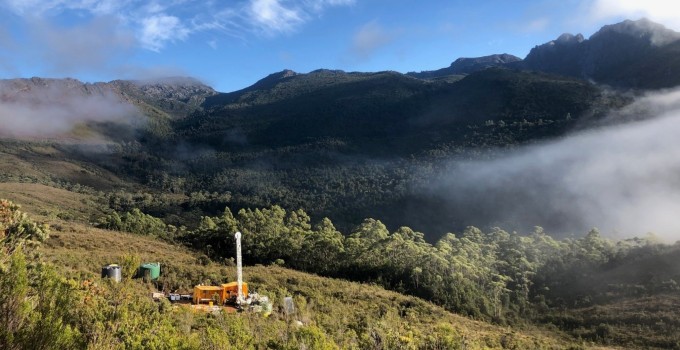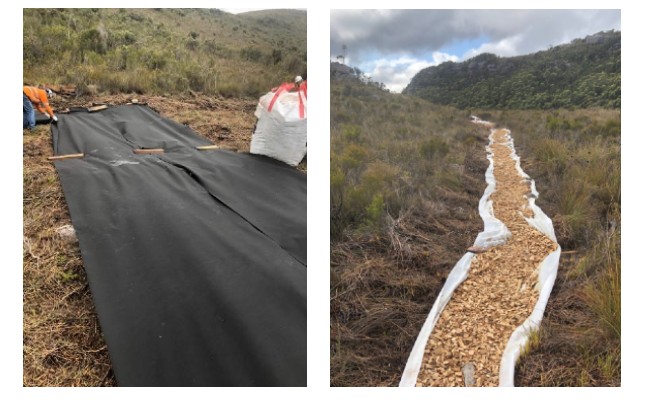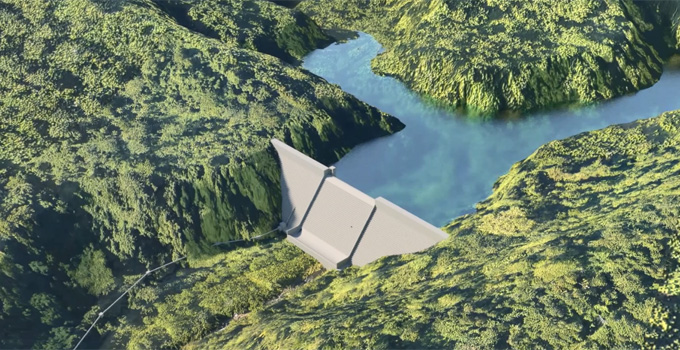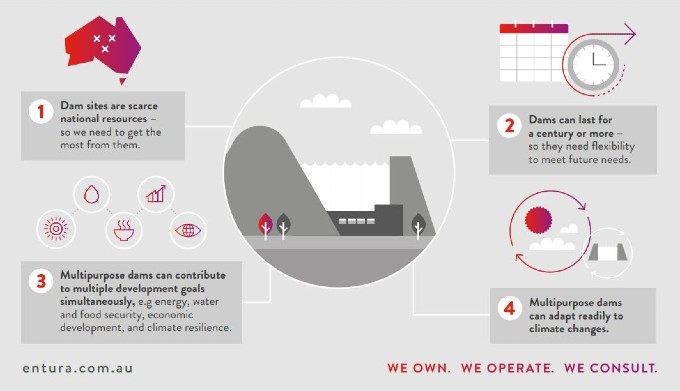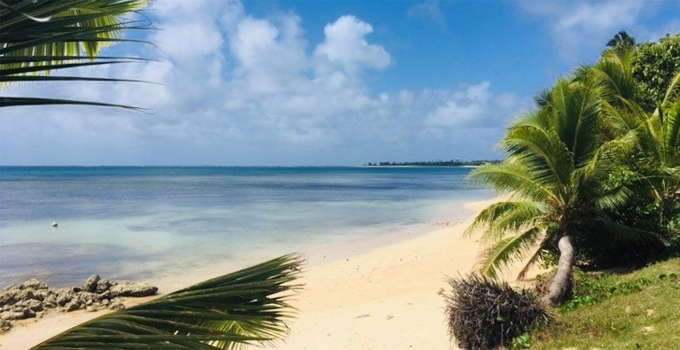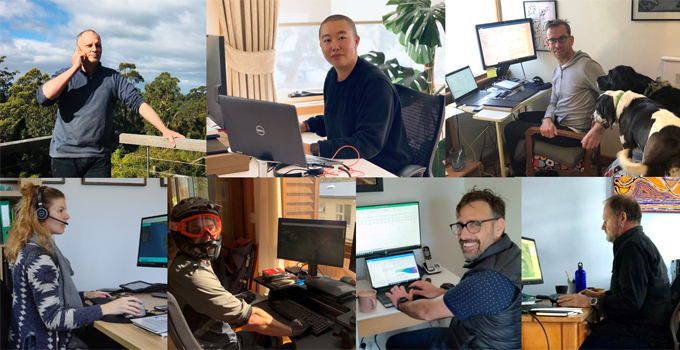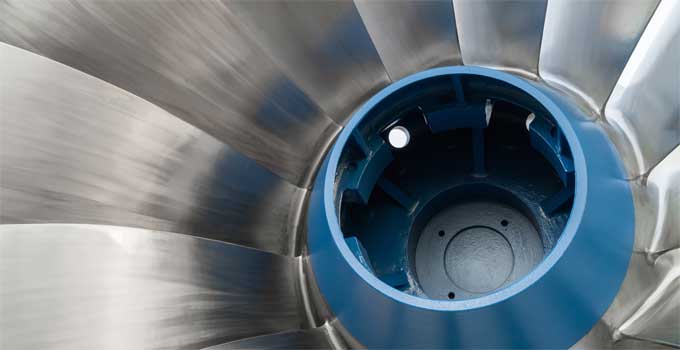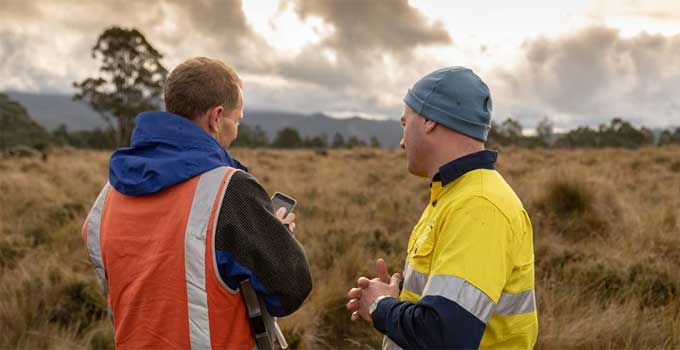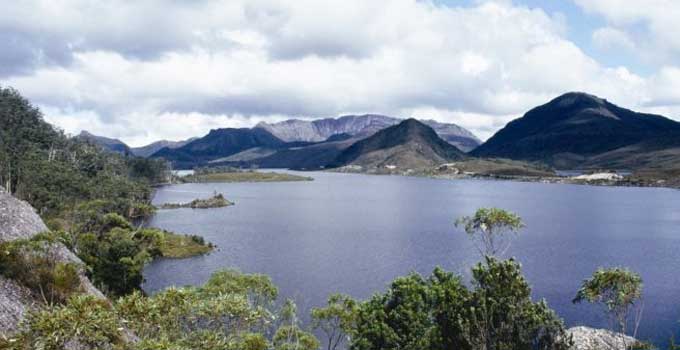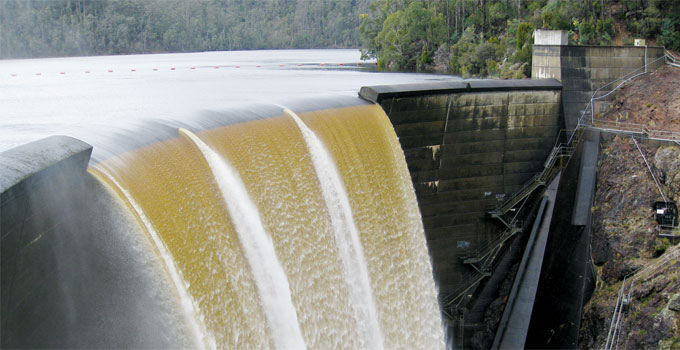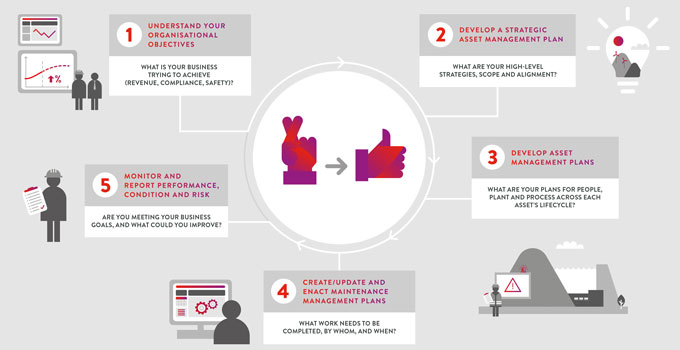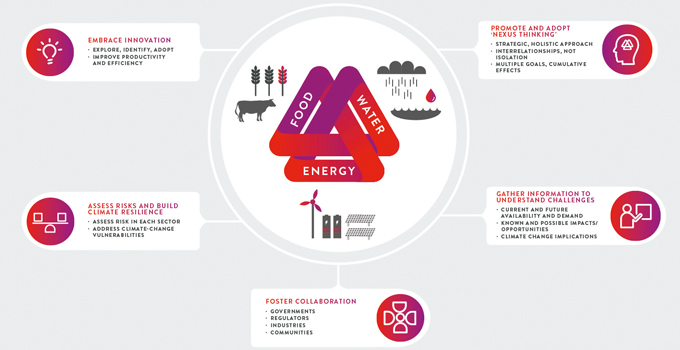‘Dams for People, Water, Environment and Development’ – some reflections from ICOLD 2024
Entura’s Amanda Ashworth (Managing Director) and Richard Herweynen (Technical Director, Water) recently attended the International Commission on Large Dams (ICOLD) 2024 Annual Meeting and International Symposium, held in New Delhi. Amanda presented on building dam safety capability, skills and competencies, while Richard presented on Hydro Tasmania’s risk-based, systems approach to dam safety management, and the importance of pumped hydro in Australia’s energy transition.
Here they share some reflections on ICOLD 2024 …
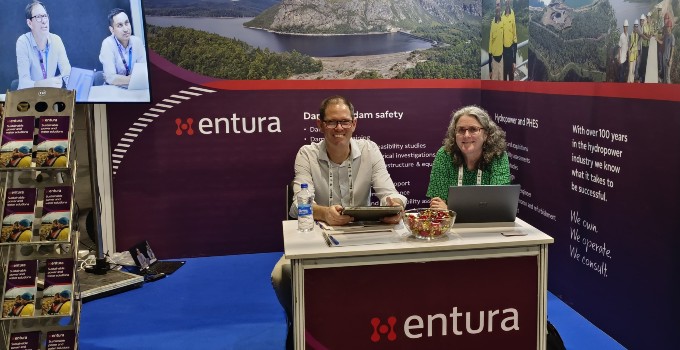
Richard Herweynen – on the value of storage, ‘right dams’, and stewardship
At ICOLD 2024 we were reminded again that water storages will be critical for the world’s ability to deal with climate change and meet the growing global population’s needs for food and water. We can expect greater climate variability and therefore more variability in river flows, which means that more storage will be needed to ensure a high level of reliability of water supply. Without more water storages to buffer climate impacts, heavily water-dependent sectors like agriculture will be impacted.
To slow the rate of climate change, we must decarbonise our economies – but without significant energy storage, it will be difficult to transition from thermal power to variable renewable energy (wind and solar). Pablo Valverde, representing the International Hydropower Association (IHA), said at the conference that ‘storage is the hidden crisis within the crisis’. There was a lot of discussion at ICOLD 2024 about pumped hydro energy storage as a promising part of the solution. It is also important, however, to remember that conventional hydropower, with significant water storage, can be repurposed operationally to provide a firming role too. Water storage is the biggest ‘battery’ of the world and will be a critical element in the energy transition.
With the title of the ICOLD Symposium being ‘Dams for People, Water, Environment and Development’, I reflected again on the need for ‘right dams’ rather than ‘no dams’. ‘Right dams’ are those that achieve a balance among people, water, environment and development. In the opening address, we were reminded of the links between ‘ecology’ and ‘economy’ – which are not only connected by their linguistic roots but also by the dependence of any successful economy on the natural environment. It is our ethical responsibility to manage the environment with care.
When planning and designing water storages, we must recognise that a river provides ecological services and that affected people should be engaged and involved in achieving the right balance. If appropriate project sites are selected and designs strive to mitigate impacts, it is possible for a dam project’s positive contribution to be greater than its environmental impact, as was showcased in number of projects presented at the ICOLD gathering. Finding the balance is our challenge as dam engineers.
The president of ICOLD, Michel Lino, reminded delegates that the safety of dams has always been ICOLD’s focus, and that there is more to be done to improve dam safety around the world. At one session, Piotr Sliwinski discussed the Topola Dam in Poland, which failed during recent floods due to overtopping of the emergency spillway. Sharing and learning together from such experiences is an important benefit of participating in the ICOLD community.
Alejandro Pujol from Argentina, who chaired one of the ‘Dam Safety Management and Engineering’ sessions, reflected that in ICOLD’s early years the focus was on better ways to design and construct new dams, but the spotlight has now shifted to the long-term health of existing dams. It is critical that dams remain safe throughout the challenges that nature delivers, from floods to earthquakes. In reality, dams usually continue to operate long beyond their 80–100 year design life if they are structurally safe, as evidenced in the examples of long-lived dams presented by Martin Wieland from Switzerland. He suggested that the lifespan of well-designed, well-constructed, well-maintained and well-operated dams can even exceed 200 years. As dam engineers, no matter the part we play in the life of a dam, we have a responsibility to do it well.
From my conversations with a number of dam engineers representing the ICOLD Young Professional Forum (YPF), and seeing the progress of this body within the ICOLD community, I believe that the dam industry is in good hands – although, of course, there is always more to be done. I was pleased to see an Australian, Brandon Pearce, voted onto the ICOLD YPF Board.
Another YPF member, Sam Tudor from the UK, reminded us in his address of the importance of knowledge transfer, the moral obligation we all have especially to the downstream communities of our dams, and our stewardship role. He was referencing his experience of looking after dams that are more than 120 years old – all built long before he was born. Many of our colleagues across Entura and Hydro Tasmania feel this same sense of responsibility and pride when we work on Hydro Tasmania’s assets, which were built over more than a century and have been fundamental to shaping our state’s economy and delivering the quality of life we now enjoy. It is up to all of us to carry the positive legacy of these assets forward with care and custodianship, for the benefit of future generations.
Amanda Ashworth – on costs and benefits, dam safety, and an inclusive workforce
Like Richard, I found much food for thought at ICOLD 2024. For me, it reinforced the need to accelerate hydropower globally, particularly in places where the total resource is as yet underdeveloped. To do so, we will need regulatory frameworks that support success – such as by monetising storage and recognising it as an official use – and administrative reforms that ease the challenges of achieving planning approvals, grid connection agreements and financing for long-duration storage. We must encourage research and development to move our sector forward: from multi-energy hybrids to advanced construction materials and innovations to improve rehabilitation.
In particular, I’ve been reflecting on how our sector could extend our thinking and discourse about the impacts and benefits equation beyond the broad answer that dams are good for the net zero transition. How can we enact and communicate the many other potential local environmental and social benefits and long-term value from dams?
Much of the world’s existing critical infrastructure came at a significant financial expense as well as social and environmental costs – so it is our obligation to pay back that investment by maximising every dam’s effective life. When we invest in extending the lifespan of dam infrastructure through effective asset management and maintenance, and when we maximise generation or the value of storage in the market, we increase the ‘return on investment’ against the financial, social and environmental impacts incurred in the past.
Of course, the global dams community must continue to prioritise dam safety and work towards a ‘safety culture’. I was pleased to hear Debashree Mukherjee, Secretary of the Ministry of Jal Shakti, celebrate the progress on finalising regulations across states to enact India’s Federal Dam Safety Act and establishing two centres of excellence to lift capacity across the nation. Dam safety depends on well-trained people with the right skills and competencies to comply with evolving standards, apply new technologies, and respond effectively to changing operational circumstances and demands.
I also enjoyed hearing from ICOLD’s gender and diversity committee on its progress, including updates from around 14 nations on their efforts to build a more inclusive renewable energy and dams workforce. This is front of mind for us, as we step up Entura’s own focus and actions on gender equity throughout our business this year.
The challenges facing our dams community – and our planet – are enormous, but there is certainly much to be excited about, and we look forward to continuing these important conversations over the next year.
From Richard, Amanda and Entura’s team, many thanks to the Indian National Committee on Large Dams (INCOLD) for organising and hosting this year’s ICOLD event, supporting our sector to build international professional networks, and facilitating the sharing of experiences and knowledge across the globe – all of which are so important for growing the ‘ICOLD family’ and supporting a safer, more resilient and more sustainable water and energy future.
Growing the future of hydropower – observations from a career in the industry
Entura’s Senior Principal Hydropower, Flavio Campos, knows hydropower inside out. Flavio has recently joined Entura, after working around the world on significant hydropower projects ranging from 30 MW to a whopping 8,240 MW. We asked him to share some of his hydropower journey, what excites him about the future of the sector, and what’s different about conventional hydropower and pumped hydro in supporting the clean energy transition …
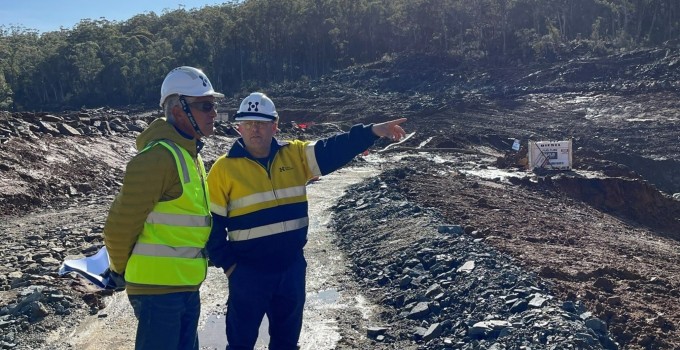
When I immigrated from Brazil to Canada in 2012, it was no accident that I settled in Ontario, near Niagara Falls. I had taken a job with a consulting firm that had a hydropower hub strategically located in the Niagara region due to its long history of hydropower.
The Niagara region is the home of the Adams Power Plant, completed in 1886 – the first alternating current (AC) power plant built at scale, delivering an installed capacity of 37 MW at 2,200 V. The voltage is stepped up by a transformer to 11,000 V, allowing for an economic transmission line reaching to the city of Buffalo, NY, 32 km away. The concept was launched by engineer Nikola Tesla in collaboration with George Westinghouse, beating Thomas Edison’s bid, which was based on a direct current (DC) system. Tesla’s dream of harnessing the awesome power of Niagara Falls was realised by the end of the 19th century, when hundreds of small hydropower plants emerged and multiple forms of electricity utilisation spread across the world.
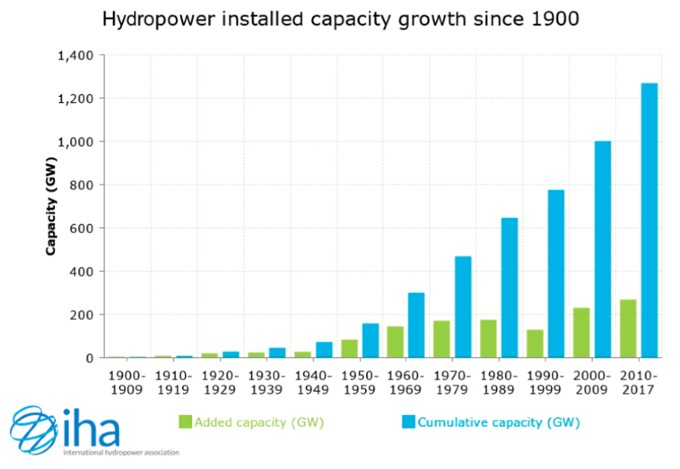
The hydropower boom, led by Brazil and China
When I started my career in the hydropower industry in 1995, I could feel the ongoing impact of the great hydropower boom that was led by Brazil and China through the 1970s and 1980s. In 1999, I was construction manager for Tucurui Dam, one of the biggest hydropower plants in Brazil and the world at that time (now ranked 8th in the world), delivering a total installed capacity of 8,240 MW. As part of my role, in order to raise production to the expected rates, I was able to visit China’s Three Gorges Dam during construction and learn about their techniques and massive concrete operations.
In the 1990s, Brazil’s hydropower industry had plenty of experienced professionals, from construction trading foremen and general superintendents to highly educated engineering professionals from whom I had the privilege to learn.
Since those glorious decades, global hydropower capacity has increased significantly. The strongest period was 2007 to 2016, when more than 30 GW was added per year on average. Since 2017, the industry has slumped to only 22 GW per year on average, with only 13.7 GW installed in 2023. However, it is interesting that of the new 13.7 GW, 6.5 GW was delivered as pumped hydro energy storage.
A new wave of pumped hydro
At a HydroVision International conference in Portland, Oregon, in 2019, I noticed that pumped hydro was a significant topic of discussion. The conference highlighted several factors making pumped hydro projects attractive for the clean energy transition: the ‘battery’ feature itself which helps to balance supply and demand, its contributions to grid stability, its lower environmental impact compared to conventional hydropower, the availability and efficiency of variable-speed units, and the cost comparison against other types of batteries.
Projections of a new wave of pumped storage soon evolved from conference coffee-break chatter to reality: in 2022, more than 10 GW of pumped hydro was delivered, the most ever achieved by the industry. Most of this has been delivered in China, where top-down policies imposed by government can deliver rapid results. Other countries operating on a more open-market basis need to improve the mechanisms to foster pumped hydro so that it can support the grid effectively as other variable renewable energy (VRE) sources, such as wind and solar, proliferate.
There is now consensus that pumped hydro is a necessity for grids to cope with increasing amounts of VRE– and the need is urgent. Pumped hydro, however, requires significant upfront investment in civil works and time to implement. Studies by the IHA indicate that besides the inherent need for additional pumped storage in the grid, the world’s conventional (non-pumped) hydropower installed capacity must double by 2050 in order to achieve net-zero transition targets. This will be challenging, given such a low level of new hydropower worldwide in recent years, and the fact that the most attractive sites have been already developed.
There is also opportunity to re-imagine existing conventional hydropower plants to make the most of their natural battery and firming potential – by operating flexibly to support firming VRE rather than generating for maximum volume. Even where there is no market mechanism to specifically monetise this value, it could be rewarded for national or regional outcomes.
How can we achieve the much-needed growth in conventional hydro and pumped hydro?
Conventional (non-pumped) hydropower has long been recognised for clean energy and the long life of the infrastructure. The challenge now is to identify, gain approvals and sustainably deliver new projects in a world where human occupation is growing fast and reaching into the most remote corners of watersheds. Governments and regulators must assess cost benefits against the social and environmental impacts before giving the green light to new hydropower projects.
Developing pumped hydro can be more flexible, especially when it is a closed-loop system that doesn’t depend on water flows, except for first-time filling and for topping up the losses caused by evaporation. Pumped hydro is not new – in fact, it has existed for more than a century. What is new, however, is the challenge of fostering pumped hydro development at the rate needed.
The IHA has helped clarify what is needed for the industry to develop pumped hydro faster. The IHA’s Guidance Note delivers recommendations to reduce risks and enhance certainty, supporting market players to better understand the issues.
Another interesting initiative in the hydropower journey is XFLEX Hydro, a European initiative which brought together 19 entities such as IHA, EDP, EDF, Alpiq, Bechtel and others, with the objective of increasing hydropower capabilities and flexibility to cope with changing grid profiles. X-Flex has launched 7 pilot projects already – and 4 of these are pumped hydro. This combined initiative has illustrated two important areas of focus that can benefit market players and accelerate uptake:
- The need for a supportive regulatory regime: Policy-makers and other stakeholders need to facilitate the development of regulations or market mechanisms that fairly compensate pumped hydro, as well as conventional hydropower, such as ‘price cap and floor’ mechanisms, compensation for stability features provided by hydropower, and expediting the approval process while ensuring that social and environmental impacts are minimised and mitigated.
- The advantages of evolving technologies, including:
- variable-speed units, increasing flexibility
- hydraulic short-circuit operation, in which the plant can pump and generate simultaneously
- hydro/battery hybrid system, in which the battery works along with hydropower and enhances plant flexibility
- digital/AI control platforms, which can improve the overall grid efficiency and reduce downtime.
Hydropower for a better future
The challenges of rapidly building out new conventional hydropower and pumped hydro are huge. Yet, where there is a will, there is a way. Those of us who understand and believe in the benefits of conventional hydropower and pumped hydro have a duty to bring communities along on the journey and to help build a better future for the next generations.
We look forward to bringing you more of Flavio’s insights into conventional hydropower and pumped hydro in future articles. Flavio is currently contributing to a number of Entura’s assignments including supervising construction on the Genex Kidston PHES project in Queensland, for which Entura is the Owner’s Engineer, and being a key adviser on the Tarraleah upgrade as part of Hydro Tasmania’s Battery of the Nation program.
Dams are crucial to climate change response and the energy transition
At the recent ICOLD meeting in Gothenburg, Sweden, dam engineering experts from across the globe came together to share knowledge, discuss trends and issues, and engage with each other. One important topic of discussion was the role of dams in the international response to climate change and what that will mean for the dams industry. Richard Herweynen, Entura’s Technical Director, Water, shares his thoughts on this topic here …
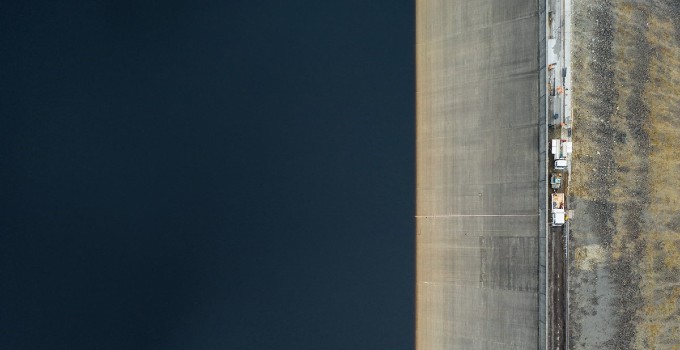
Why will dams play a critical role?
Three major reasons why dams will be crucial in the climate change response and energy transition are water security, dispatchability of electricity, and tailings storage.
- Water storages will be vital to provide the same level of water security
Water security is essential for humanity. With greater hydrological variability due to climate change, more storage will be needed to provide the same level of security of water, food and energy. Water storage is a fundamental protection from the impacts of a changing climate, safeguarding the supply of water, and the water–food–energy nexus, even during extended drought.
The effects of climate change are predicted to increase and to result in greater magnitude and frequency of hydrological extremes, such as prolonged droughts and significant floods. With prolonged drought, inflows to storages will reduce. If demand remains the same, stress on existing water storages will increase.
Water storages are used to regulate flows and manage this variability: storing water when there are high inflows (or floods) and then using this stored water during low inflows (or droughts). Dams are used to create these vital water storages.
- Hydropower and pumped hydro energy storage (PHES) are critical for the energy transition
A key response to climate change is the decarbonisation of the electricity sector through renewable energy. Wind and solar power now offer the lowest cost of energy, have low ongoing operational costs, and emit the least greenhouse gases across their lifecycle – and therefore hold the greatest potential for rapid decarbonisation of the energy sector. Of course, wind and solar PV output vary according to the weather and the time of day – but the electricity market needs the supply of electricity to match demand, or for these renewables to be dispatchable.
Energy storage is the key to smoothing out the variability of renewable energy generated by solar and wind. The power and duration of the storage are the two key variables in determining the most suitable solution. Low-power, short-term storage is currently more cost-effective using batteries, but longer periods and larger power requirements are likely to rely on bigger storage options, such as pumped hydro energy storage (PHES) and traditional hydropower. Smoothing out the daily variability in renewables can be achieved effectively through pumped hydro. Dams are used to create the water storages used in both traditional hydropower and PHES.
- The transition to renewables will demand more minerals and metals
The global energy transition will demand a major increase in renewable energy technologies – which in turn will require more of the ‘critical energy minerals’ and metals. The rising need for minerals such as copper, aluminium, graphite, lithium and cobalt will not be able to be met by recycling and reuse alone. Therefore, extraction and storage of minerals from mining operations will be essential to sustain the renewable energy transition.
According to a report by the World Bank Group, the production of minerals such as graphite, lithium, and cobalt could increase by nearly 500% by 2050 to meet the escalating demand for clean energy technologies. It is estimated that over 3 billion tonnes of minerals and metals will be necessary for the deployment of wind, solar, geothermal power and energy storage, all of which are vital for achieving a sustainable future with temperatures below 2°C.
However, this need for mining activity comes with a special responsibility for sustainable practices, including the proper management and storage of mining waste. Rock, soil and other by-products are left behind after the desired minerals have been extracted from the ore. Tailings facilities store this waste, playing a crucial role in mitigating the environmental impact of mining operations. Dams, in particular, are commonly used to create these facilities, as they provide an effective means of containing the waste.
Dams used in tailings facilities are designed to withstand the weight and pressure of the waste materials, prevent seepage of contaminants into the surrounding environment, and take into account factors such as stability, erosion control and water management. Dams that are well designed, constructed and monitored, adhering to stringent environmental and safety regulations, can help prevent the spread of mining waste into nearby water bodies, reducing the risk of water contamination and protecting aquatic ecosystems.
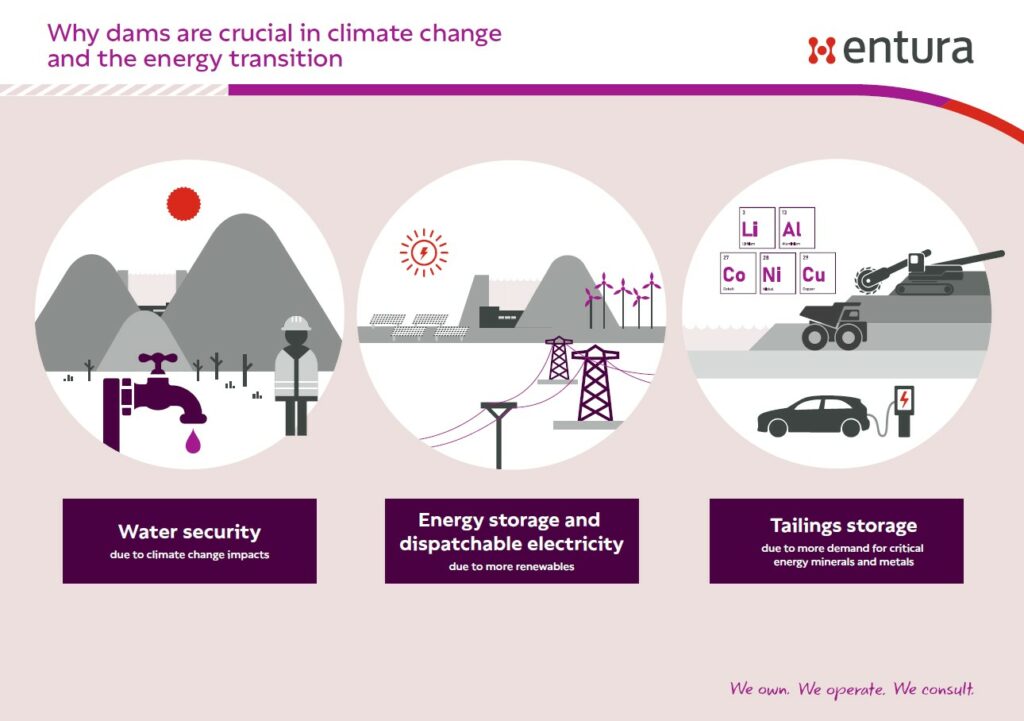
Working towards ‘good dams’
While there have certainly been some examples around the world of dams that have had adverse impacts, it is clear that dams will play a critical role in the international response to climate change and the decarbonisation of the energy sector. It’s therefore vital that dams are planned, constructed and managed appropriately and safely. With increasing understanding of impacts and far greater sophistication of internationally accepted sustainability protocols, it is now up to developers and planners to heed the lessons of the past and find the right dam sites for nature and communities.
It is important that we ensure the safety of existing dams as well as the safety of any new dams. Examples from around the world demonstrate the devastating consequences of dam failures. Safety must be every dam owner’s key concern, and should be managed through an active dam safety program.
Of course, the larger the portfolio of dams an owner is managing, the greater the demand on their resources; however, it is critical that dam safety risks for water storages and tailings facilities are managed appropriately across dam portfolios to protect downstream communities. The Portfolio Risk Assessment process increases the focus on potential failure modes and risk as drivers of the dam safety program and as the basis for deciding priorities for allocating operational and capital resources.
It will also be vital that dams engineers, owners and operators keep up to date with the latest developments in the dams industry worldwide through continuous learning and important global forums such as ICOLD.
If you’d like to talk with Entura about your water or dam project, contact Richard Herweynen.
About the author
Richard Herweynen is Entura’s Technical Director, Water. Richard has three decades of experience in dam and hydropower engineering, and has worked throughout the Indo-Pacific region on both dam and hydropower projects, covering all aspects including investigations, feasibility studies, detailed design, construction liaison, operation and maintenance and risk assessment for both new and existing projects. Richard has been part of a number of recent expert review panels for major water projects. He participated in the ANCOLD working group for concrete gravity dams and is the Chairman of the ICOLD technical committee on engineering activities in the planning process for water resources projects. Richard has won many engineering excellence and innovation awards (including Engineers Australia’s Professional Engineer of the Year 2012 – Tasmanian Division), and has published more than 30 technical papers on dam engineering.
MORE THOUGHT LEADERSHIP ARTICLES
Planning sustainable water infrastructure in a changing world
In an already water-stressed world and a rapidly changing climate, water is increasingly precious. To manage and control this vital resource, we must create and maintain safe, reliable and sustainable water infrastructure – and such a challenge calls for good planning.
The International Commission on Large Dams is working towards releasing new guidance for water infrastructure planning – and Entura’s Richard Herweynen is a member of the Technical Committee looking to develop a new ICOLD Bulletin on planning. In this article, Richard explains the importance and evolution of planning approaches.
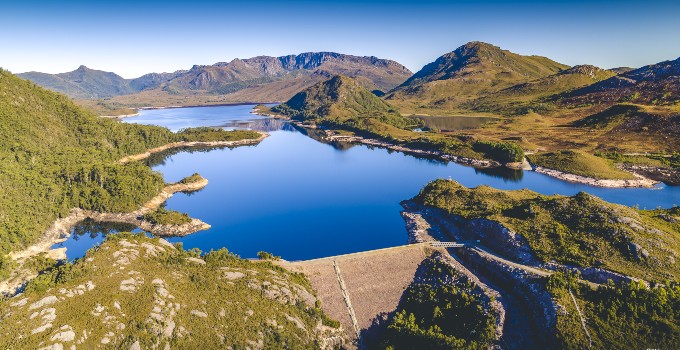
Water infrastructure projects deliver the dams, treatment plants, irrigation systems and distribution networks that provide water for homes, food production, industries and emergencies. They also create the structures integral for mitigating the effects of floods and droughts. But to maximise the benefits of this infrastructure, projects must be planned, engineered and managed for effectiveness, safety and sustainability.
These projects are far too important to approach in a haphazard way. Planning offers a structured, rational approach to solving problems – and it is the start of the ‘pipeline’ for addressing water resource needs and competing demands. In fact, for civil works programs, everything begins with planning.
Without a good plan, where are we?
Without careful planning, it can be difficult to achieve creative, cost-effective solutions to water needs. The planning stage helps decision-makers identify water resource problems, conceive solutions and evaluate the inevitably conflicting values inherent in any solution. Planning is best done by a team that brings together specialists in many of the natural, social and engineering sciences.
At the planning stage, all of the following points should be thought through:
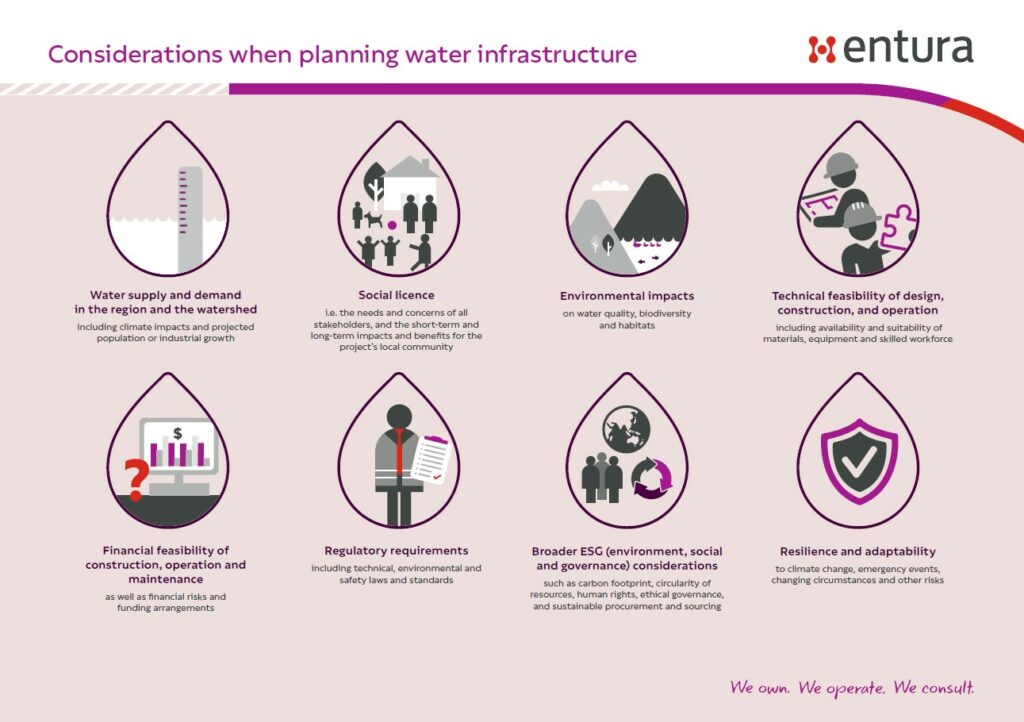
Guidance for better planning
In 2007, I became the ANCOLD-nominated member on a new Technical Committee for the International Commission of Large Dams (ICOLD) entitled ‘Engineering Activities in the Planning Process for Water Resource Projects’. In 2009 we put forward a position paper setting out an ‘Improved Planning Process for Water Resource Infrastructure’ based on ‘comprehensive vision based planning (CVBP)’.
At the next ICOLD Annual Meeting in Sweden in June 2023, our committee will be meeting to work on an updated framework that takes into account the rapid change we’ve witnessed over the last decade and the many cross-cutting issues that are impacting the planning process, such as risk-informed decision-making, climate change, sustainable development, environmental concerns, and river basins/systems.
What is ‘comprehensive vision-based planning’ (CVBP)?
Before we talk about updates, let’s take a quick look at our existing approach to CVBP, as articulated in 2009.
CVPB is a comprehensive, transparent planning process based on a shared vision for sustainable water resource development. It aims to achieve a better ‘triple bottom line’ outcome, with optimum economic, social and environmental outcomes.
Whereas many past projects were planned on a case-by-case basis, CVBP looks beyond the immediate project to the broader regional vision and watershed goals (which may also cross national borders), taking projected changes in water supply and demand into account. It draws on integrated water resources management (IWRM) to consider multiple points of view about how to manage water and to view each water infrastructure project in relationship to the other existing infrastructure in the region.
CVPB also incorporates much greater attention to the realistic options and cost-benefits of mitigation of environmental impacts – and it draws in more interdisciplinary engineering, cost estimating, and stakeholder/community engagement.
CVBP is, therefore, a holistic, integrated and collaborative approach to planning and a much-improved pathway towards successful outcomes.
The 8 steps of CVBP
As currently articulated, CVBP has 8 defined steps – but it’s an iterative process in which steps 2 to 7 are repeated multiple times, as necessary. The 2009 ICOLD bulletin goes into much greater detail than we can in this article, but this will give you an overview:
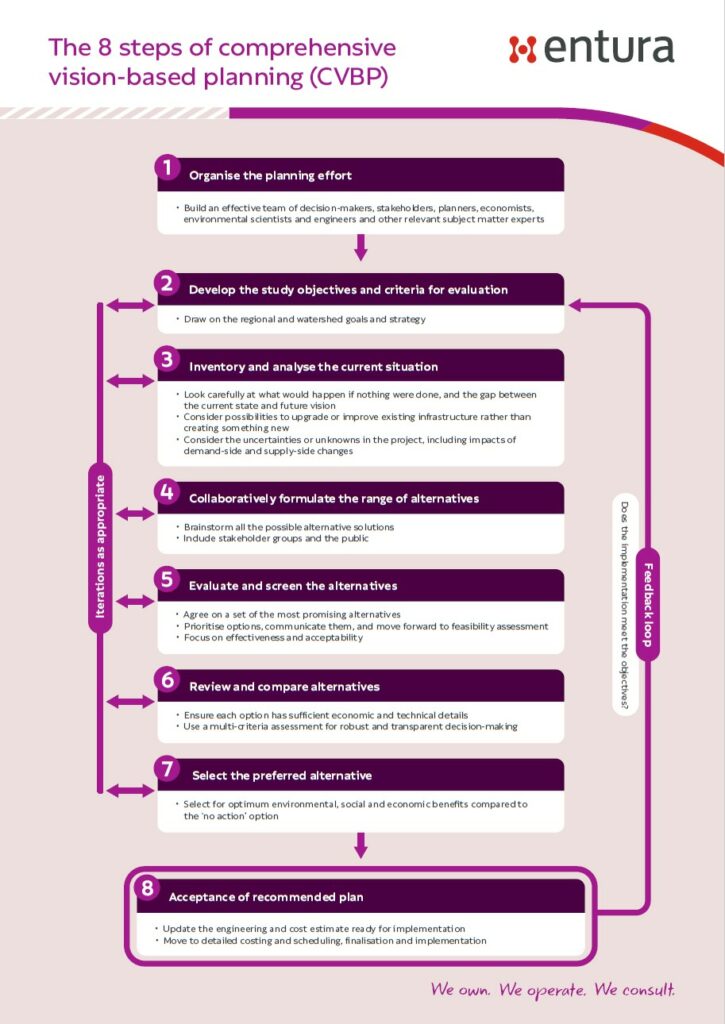
Changes moving forward
It is time to update the planning process and guidance in the light of the rapid changes we are experiencing in our environment, innovations in technologies, and an increasing awareness of sustainability and ethics.
In the past, much water infrastructure has been planned within a reasonably near-term political and social lens and timeframe, and from a perspective of relative stability. But we know that change is constant and rapid, so our planning approaches need to shift to an even greater appreciation of uncertainty, risk and the intensifying potential for extreme events. There is also an urgent need to apply a deeper and broader awareness of the many considerations that make for greater environmental, social and economic sustainability.
Important factors here will be an uplift in stakeholder involvement and governance, a very clear focus on the costs and benefits that can’t easily be quantified or monetised, and reinforcement of the fundamental principle of ‘do no harm’.
It will also be important to take an adaptive approach to regional planning objectives, with a strong awareness of different regional and cultural values, goals, expectations, methodologies, financing arrangements and roles of government.
We should expand the planning scenarios to also explore non-structural options, dam removal plans, and scenarios based on failure modes. We also need to improve early data collection by finding and filling data gaps, improving the ways in which we preserve historical information, and improving data portrayal.
It is very important to involve the right people. Ideally, the planning team should be more than ‘multi-disciplinary’ or ‘interdisciplinary’. It should aspire to be ‘transdisciplinary’, in which all disciplines work seamlessly and collectively and achieve a level of insight that is ‘greater than the sum of its parts’.
This year, our Technical Committee will continue to build on some of these elements as we review and rearticulate CVBP, working towards a new ICOLD Bulletin to guide water infrastructure planning.
In a changing world, our approaches to infrastructure cannot stagnate. Designing, articulating and applying new planning frameworks is an important step towards creating and maintaining the sustainable, reliable water infrastructure our planet so urgently needs.
If you’d like to talk with Entura about your water or dam project, contact Richard Herweynen.
About the author
Richard Herweynen is Entura’s Technical Director, Water. Richard has three decades of experience in dam and hydropower engineering, and has worked throughout the Indo-Pacific region on both dam and hydropower projects, covering all aspects including investigations, feasibility studies, detailed design, construction liaison, operation and maintenance and risk assessment for both new and existing projects. Richard has been part of a number of recent expert review panels for major water projects. He participated in the ANCOLD working group for concrete gravity dams and is the Chairman of the ICOLD technical committee on engineering activities in the planning process for water resources projects. Richard has won many engineering excellence and innovation awards (including Engineers Australia’s Professional Engineer of the Year 2012 – Tasmanian Division), and has published more than 30 technical papers on dam engineering.
MORE THOUGHT LEADERSHIP ARTICLES
Field investigations in remote locations – factors for success
Conducting field investigations in remote areas is no ‘walk in the park’. On top of the investigation activities themselves, there are the complex logistics of getting personnel and equipment into hard-to-reach places, the imperatives of maintaining safety and managing community expectations, and the significant challenge of conducting works but leaving minimal impact on the landscape.
‘Leave no trace’ may not be too hard a goal when you’re heading off on a simple bushwalk. However, when it comes to conducting field investigations in remote areas with heavy specialist equipment, ‘treading lightly’ can be extremely challenging – but it is something Entura is committed to.
Entura has recently delivered geotechnical investigations for Hydro Tasmania’s feasibility study into the potential for pumped hydro development in some very rugged, remote country in western Tasmania. This is how we did it, and some success factors we can share for field work in these conditions.
Planning
Planning and contract expertise is paramount for successful execution of any project, but particularly so in remote locations. It’s important to take the time at the very beginning of a project to really understand the entirety of the scope and the project objectives. To reduce the risk of unwelcome surprises and unwanted variances, spend enough time on the ground before the works commence so that you can be sure that all the elements have been considered.
This is also the time to gain a full understanding of all the permits and approvals that will be required, the lead time to achieve them, and the range of agencies and key stakeholders who need to be engaged right from the earliest stages.
It will take time and consideration to engage carefully with all contractors to understand their expertise, capability and willingness to undertake the works; but the effort to find the right contractors will be more than repaid by the improved outcomes.
Our project involved multiple drilling investigations to 600 m in 3 separate and remote locations, including a deep ravine located between Lake Plimsoll and Lake Murchison in the heart of Tasmania’s West Coast. The goal was to achieve a clear understanding of geological conditions within the region, which had previously been identified as a fault zone. Our planning needed to encompass all the necessary desktop studies to understand as much as possible about the environment, the stakeholders, the regulations and requirements, and the conditions our contractors could expect, all in advance of sending personnel and equipment into the remote site.
The key to our success in the project was leaving no stone unturned in the planning phase, and using these preliminary insights to choose the right contractors for the job, with the right equipment and skills to achieve our objectives. When things go smoothly and look seamless or simple from the outside, it is usually because of the significant investment of effort in detailed, logical planning right at the start.
Site access
Remote access can be extremely difficult, so the success of a project will depend on establishing practical, efficient and low-impact routes at the earliest stages of planning. Time is money, so contractors will need the easiest and quickest access to the site that you can achieve without compromising on safety or the environment. This will need early and thorough engagement with land-owners to identify constraints, requirements and options. Selecting the best access options will rely on a deep understanding of the biodiversity and heritage values of the site through desktop analysis combined with intensive field observations and data collection.
We selected access routes using a variety of considerations, including what equipment would be required on site, the duration of investigations, the significance of data we gained in the planning stage, analysis of the costs and benefits of options, consideration of the longer term benefits to the land-owners, and consideration of future works.
Ultimately we used a combination of access methods including foot tracks, temporary and permanent roads, and helicopter access. Again, it was crucial that we chose the right contractors who could cope with the conditions and understand the constraints. Our excellent local contractors were integral to our success.
Environment
Conducting works in a region of high natural values demands deep consideration of strategies to avoid or reduce long-term impacts and of what remediation efforts will be necessary and effective.
In one particular instance, we identified and implemented a range of strategies to create a 1.2 km foot-access track in a very sensitive and damp area that was likely to become muddy and highly degraded under the pressure of constant foot traffic during the duration of the works. To protect against this, we hand-cleared the site, developed suitable drainage channels, stabilised the banks, then deployed geo-fabric matting onto which we laid a top coat of clean and approved local woodchips. This innovative solution proved highly successful: it provided solid, safe and reliable footing, excellent drainage and made clearing up the site relatively easy and efficient as the woodchips could be wrapped in the geo-fabric matting, bagged and removed from the site. Once the works were completed, the cut-back vegetation was relatively unscathed, and was able to re-shoot and re-establish rapidly.
Stakeholder and community engagement
Continuous and inclusive community and stakeholder engagement, tailored to the particular community or stakeholder segment, is critical for the success of any project – and the earlier it begins, the better. In our project, we went out on the front foot, building a shared understanding of our objectives, making detailed information available and inviting stakeholders to raise any concerns with our team. We even facilitated site visits for key stakeholders to gain a fuller understanding of the works and build trust.
Many project proponents will tell stakeholders and communities that they want them ‘to come on the journey’ – but we walked the talk, inviting stakeholders to check our milestones, come along to inspect aspects of the work, and to share their feedback.
Cultural heritage
Over a sustained period, Hydro Tasmania has undertaken intensive desktop and field analysis of particular regions and their history. In addition to this rich database of information, Entura has access to specialist cultural heritage consultants who document heritage sites and support us to manage these sites in accordance within the appropriate legislation requirements. Early notification and thorough assessment early in the planning phase indicates whether a heritage site or specific location is likely to be encountered, which enables processes to be established to mitigate heritage risk, minimise site damage and, in some instances, plan for total avoidance and re-siting of works.
In our project, the early engagement of reputable consultants gave us confidence that any areas of significance had been identified. We clearly defined these areas of significance and protected them from any impacts from the works.
Water supply
Drilling investigations require a significant volume of water every day. But not all, if any, remote locations have a ready supply, and if so it’s usually some distance away. Geotech drilling investigations require up to 30,000L/day depending on ground conditions, so the ability to capture and re-circulate water and reduce sediment discharge to the natural environment is crucial in remote locations. Sometimes this needs a bit of innovative thinking to achieve.
Working in a naturally wet environment and on a hillside enabled us to trap natural run-off and control flow to a small header tank (44 gallon drum), then pipe the water to 3 x 10,000L tanks at a flow rate over 24hr period. Three sandbags, float switches and low-impact plastic irrigation pipe allowed us to supply the drill rig with water for 90% of its operation, only having to stop temporarily while drilling during a 5-day period without rainfall.
The creation of a small pond on a steep downhill slope minimised environmental impact downstream and allowed a steady flow of water to continue over the micro dam. The header tank minimised air locks, while tank float switches prevented overflow on the drill site.
By capturing water above the work site, we eliminated the need for extra foot tracks to the creek down in the valley or the need to pump and re-fuel a diesel water pump or to truck water in over 2 km.
Climate conditions
Projects sometimes can’t wait for the perfect time of year to commence. In Tasmania, this brings the challenges of adverse weather conditions and extreme events such as snow and bushfire – even within the same month!
Our remote projects faced these challenges, including frozen water pipes, snowed-in access routes and the risk of bushfire. Planning, watching the weather, and evacuation plans became a daily function.
At one particular location we soon learned that water freezing overnight in pipes could cause significant delays in the morning. Our quick solution was to drain the pipes at night to avoid the problem reoccurring.
To mitigate risks in hot conditions, we had safety processes and equipment in place, such as no-work orders in extreme hot and windy conditions, evacuation plans, safe areas, designated exits, fire pumps and satellite communications.
Safety
Safety should be a top priority on all worksites, and working in very remote areas involves an extensive range of safety considerations. Our workplace health and safety plan provided an overarching document to support the program of work, providing a framework of safety planning, processes and equipment, and careful consideration of the range of potential controls. Each of our contractors developed their own safe work method statement for their own tasks.
In our project, the key identified risks were driving long distances in remote areas and working in areas at risk of bushfire. However, adding to the complexities of safety considerations was that our project was conducted in the time of COVID-19, which necessitated extra hygiene requirements, COVID testing, travel restrictions and the need to immediately stop work when any symptomatic individuals were identified. Ultimately, by implementing our safety plans and processes, we completed the project with no significant safety incidents.
Team work and problem solving
In such complex conditions, the ‘glue’ is good relationships built on trust, shared expectations and objectives, accountability and confidence in each other. This enables collaborative problem solving to overcome challenges or changes in the project. However, contractors often don’t know each other and may be meeting for the first time onsite, so these trusting relationships need to be built quickly.
This requires a level of frankness and transparency among all parties, with honest and open analysis of where things are working well, where there’s room for improvement or where more support is needed.
Particularly in remote areas, it is essential that people don’t feel isolated or alone. Regular drop-ins can help, providing continuity and fresh eyes on site.
Some of the success of a remote project will come down to experience, but just as much depends on good teamwork, regular and open communication, choosing great contractors, and meticulous planning. Not every on-site circumstance can be foreseen, but with these success factors in place, you’ll have a solid foundation and the flexibility to solve challenges on the ground as they arise.
Written by James Butler.
MORE THOUGHT LEADERSHIP ARTICLES
Multipurpose dams: maximum value for money?
When a dam is being considered, there’s usually a primary purpose. But are there also secondary purposes that can benefit the local and wider community? Have you thought about the potential additional economic development that can stem from a multipurpose dam?
Multipurpose dams combine two or more functions of traditional single-purpose dams into one dam infrastructure project. A multipurpose dam may combine storing and supplying water for irrigation, industry or human consumption; flood control; power generation and power storage; navigation; water regulation; environmental releases; climate change resilience; and recreational purposes.
The dam structure will be similar to a single-purpose dam, but the design will incorporate features into the dam and water infrastructure facility to accommodate different purposes. These may take the form of irrigation channels, power generation facilities or navigation facilities. Including various gates or valves can provide greater operational flexibility for floods or environmental releases for downstream community and environmental needs. A single-purpose project can become multipurpose during its planning stage, during operation, or in the long term when re-engineering becomes necessary.
Why consider multiple purposes?
Multipurpose dams are not a new concept; in fact, almost half of all dams are used for more than one purpose. There is a growing trend to consider multiple purposes when developing a dam, for several reasons:
- Dam sites, particularly storage sites, are scarce national resources (i.e. they are not unlimited), so it makes sense to consider how to extract maximum benefit from them when constructed.
- Dam infrastructure may commonly last for up to 100 years or more (i.e. they are considered a long-term asset). A dam represents a genuine long-term investment for the future, and so ideally should be viewed as such and incorporate the potential for flexible use over time.
- Multipurpose dams are very beneficial in developing countries, as the multi-functionality of the dam operations can contribute to a number of development goals simultaneously, such as energy, water and food security, economic development, and climate resilience. In 2016, the International Commission of Large Dams (ICOLD) recognised the importance of multipurpose dams in the release of the ICOLD Bulletin ‘Multipurpose Water Storage – Essential Elements and Emerging Trends’, which rightly links the common global needs of water, food and energy. The sporadic, spatial and temporal distribution of precipitation rarely coincides with demand, making storage essential for food supply, energy production, potable water supply and other water delivery services that depend on sizable, reliable, continuous and efficient supply of water.
- Climate change scenarios predict increasing variability in rainfall, impacting both yields and flood peaks. Droughts will affect agricultural production, and flooding is expected to increase due to more extreme weather events. With many regions of the world experiencing significant water stress, which is expected to be exacerbated by global warming, storage will play an increasingly critical role in bolstering a water system’s hydrological resilience. Dam projects should be designed with this necessity and value of storage in mind. Even in developed countries, we need our dam infrastructure to be ready to adapt to future changes as required. Taking change into account and considering multipurpose approaches will benefit new dam projects as well as projects that modify existing reservoirs.
Looking into the future
Multipurpose water storage projects pose additional engineering challenges when compared to single-purpose projects. Given the longevity of the infrastructure of large storage projects, planning professionals need to develop and implement solutions that will provide adequate flexibility to adapt to changes or to the diverse needs of multipurpose schemes. Scale, site selection and operational characteristics should be assessed through a long-term perspective, incorporating anticipated trends and emphasising adaptability so that future generations will inherit infrastructure that can evolve as the world continues to change.
There is no doubt that this sustainability principle is valid; however, determining how best to implement it in practice is not always easy. It is hard to anticipate and predict what will happen in a century (which is the expected life of many dams), yet this should not stop us during the early stages of the project from trying to assess long-term performance based on potential long-term scenarios (i.e. scenario testing).
Multiple perspectives for multiple purposes
Achieving the best outcome for a multipurpose dam is more likely when planners and engineers work together and closely consider the local community’s needs and the potential benefits to be gained. Both social and environmental needs should be considered, with detailed social and environmental impact assessments conducted.
Applying the principles of Integrated Water Resource Management (IWRM) in the planning process will help promote coordinated development and optimal management of water resources – furthering progress towards goals of social equity, economic efficiency and environmental sustainability. It is important to establish criteria by which to monitor the achievement of the multipurpose objectives and the post-construction impacts on the community and environment. Another important consideration is the manner of operation of the multipurpose reservoir, which will also be critical to achieving the range of its objectives.
What is a multipurpose dam worth?
A key planning challenge in multipurpose dam infrastructure is fully appraising the economic costs and benefits of the project. In many projects there’s a tendency to focus the analysis on the components that provide revenue streams (such as energy and water supply and irrigation tariffs) as these are most easily valued. However, this can underrepresent the project’s value across all of its multipurpose objectives, potentially resulting in suboptimal decision making or difficulty justifying the long-term investment. For example, a fundamental purpose of storage projects is flood mitigation – but flood mitigation does not generate a revenue stream. However, the economic value of flood control to a country (through avoidance of direct and indirect flood damages) often justifies the allocation of funds from the public sector.
Putting this into practice in Samoa
The Alaoa Multi-Purpose Dam in Samoa is a fitting example of the considerations presented above.
Samoa is a small tropical island country in the Pacific, and has been heavily affected by severe tropical storms. In 2012, Cyclone Evan caused extensive flooding and damage to the Apia region, the capital, where most of the population and economic activity is located. With such storms predicted to increase in frequency and severity as the climate changes, the Government of Samoa has adopted a programmatic approach to address climate-change-induced flooding. This includes the new Alaoa Multi-Purpose Dam, sized and designed with long-term climate scenarios in mind and to provide multiple functions. It aims to increase flood protection, improve the current water supply system’s seasonal reliability, and provide additional hydropower via installation of a small hydro facility.
The dam’s design considered multipurpose functions and climate change risks, and included small modifications to provide better outcomes. Climate resilience was ‘designed in’ by incorporating ‘dead storage’, providing sediment flushing capability, increasing the flood capacity, and including a number of gates and valves – all contributing to future flexibility of operation.
The intake to the small hydro station incorporated a station bypass valve for water supply. As well, a low-level outlet and a mid-level outlet were added to increase the operational flexibility of the dam to meet its three purposes. This also enabled both low-flow and high-flow environmental releases, and improved dam safety management. How the reservoir is operated will be significant in achieving the multipurpose functions. The dam’s flexibility will allow future adaptive modification of the operation to align with the changing demands of the reservoir.
The main purpose of the Alaoa Multi-Purpose Dam was flood retention and mitigation. Consequently, as we discussed above, a limited financial analysis could not justify the multipurpose project, yet the broader economic analysis could. However, the financial analysis indicated that the regular revenue stream from the small hydro’s energy production could increase the project’s sustainability once constructed. This revenue stream would contribute to the ongoing operation, maintenance and dam safety activities associated with the multipurpose project’s long-term operation.
Could multiple purposes be incorporated into your dam project?
Whether you are in the planning process or the early design phase for a new dam, consider whether your project could be modified to:
- achieve multiple purposes and increase the benefits of your dam project
- increase operational flexibility to allow your dam to adapt to future changes and demands
- improve the use of water resources for all needs, including the environment
- increase the climate resilience of your dam and the impact of climate change on its multiple objectives.
If you would like to discuss how we can assist you with planning and designing a multipurpose dam, please contact Richard Herweynen, Paul Southcott or Phillip Ellerton.
About the author
Richard Herweynen is Entura’s Technical Director, Water. Richard has three decades of experience in dam and hydropower engineering, and has worked throughout the Indo-Pacific region on both dam and hydropower projects, covering all aspects including investigations, feasibility studies, detailed design, construction liaison, operation and maintenance and risk assessment for both new and existing projects. Richard has been part of a number of recent expert review panels for major water projects. He participated in the ANCOLD working group for concrete gravity dams and is the Chairman of the ICOLD technical committee on engineering activities in the planning process for water resources projects. Richard has won many engineering excellence and innovation awards (including Engineers Australia’s Professional Engineer of the Year 2012 – Tasmanian Division), and has published more than 30 technical papers on dam engineering.
MORE THOUGHT LEADERSHIP ARTICLES
Keeping international projects moving, even when we’re grounded
With no set date for when life will return to usual after COVID-19, nor any guarantee of whether life will ever return to what we previously knew as ‘usual’ at all, there are very few areas in the consulting life in which we can simply say ‘we’ll wait until this is all over’. Life, and projects, must go on.
Although we can’t avoid the disruption and uncertainty that the coronavirus has unleashed, we can increase our resilience and agility. We can also embrace opportunities to innovate and to create new ways (or reinvigorate old ways) to achieve our goals.
Here, Entura’s Environment and Planning team continue to apply their proactive approach to keeping projects alive in the current circumstances, and explain how they are continuing their activities on two international projects despite the travel restrictions that are making it impossible to visit the project sites.
Old ways for new times – Engaging communities in Tonga
For many countries across the globe, the immediate challenge is building resilience to fight through the pandemic. However, for some small island nations that have managed to stay out of the virus’s path so far, such as Tonga and the Federated States of Micronesia, the concept of resilience has a broader context.
Climate resilience is a core objective, as these nations are feeling the increasing impacts of rising sea levels and more frequent and intense weather events. In this context, robust power infrastructure that is suited to extreme weather is one component of greater resilience, as is transitioning from diesel dependence to higher levels of renewables, which builds greater security of energy supply at a lower longer term financial and environmental cost. More access to stable, reliable and clean electricity is also critical for the health, wellbeing and education of local communities, and is the foundation for economic development. Entura has been fortunate to be involved in some meaningful resilience-building projects in the Pacific, supporting many of our neighbouring nations to implement sustainable energy solutions.
However, with a current project in Tonga, coronavirus has thrown our travel plans into disarray. The challenge we’re facing now is how to continue the planning, engagement and environmental activities required by such a project when we can’t physically get there, can’t hold town hall meetings and can’t host information sessions with locals.
While the pandemic is forcing many practitioners to extend and expand their use of digital forms of engagement (such as websites, Facebook, Twitter, ‘Bang the Table’ or moderated ZOOM-based focus groups), some projects are located in communities that do not enjoy easily available or reliable internet or telephone access. In these cases, such as our project in Tonga, we need to think differently about ways to facilitate engagement from a distance.
For the Tongan project, we’re heading back to basics: the tried and tested solution of providing information on paper. Working with the local project management unit, along with our client, we are designing and implementing a newsletter to be printed in the local language and distributed to regulators and communities. It will provide snapshots of the project, latest updates on scheduling, and will even feature some interviews to provide greater coverage of ongoing community engagement.
As the construction company for the project is, like us, unable to travel internationally at the moment, construction is yet to take place. Nevertheless, we are continuing to facilitate all aspects of the project remotely, such as lining up approvals with regulators, and guiding engagement on the ground. With the help of our Tongan counterparts, we can still keep information and updates flowing despite the physical limitations on our involvement ‘in the flesh’.
Buying time and building partnerships in South-East Asia
Just as COVID-19 started closing borders and halting international travel, our team was reaching the culmination of many weeks planning an impact assessment for a large infrastructure project in South-East Asia. Our discipline experts were about to book their tickets and embark on the journey to site to survey environmental and social impacts. However, we placed the site surveys on hold indefinitely to comply with travel restrictions, ensure the safety of our people and contractors, and not risk spreading the virus in remote communities.
This abrupt shift in our plans afforded us the chance to take a breath, reflect on the project and its broader risks, and then develop an alternative plan to keep progressing aspects of the work that could be done remotely. We are now proactively undertaking desktop approval studies and initial public consultation from our desks. We’re ‘buying time’ now to save time later.
When travel restrictions lift and it is once again safe to physically attend the site, we will be ahead of where we would have been pre-COVID-19. We will better understand potential issues and have a more thorough insight into the local and community context. We’ll have already carefully planned our field studies with more targeted approaches. We’ll be better prepared for stakeholder questions that may arise, and will have already considered ways in which the project might manage challenges and risks going forward.
But there’s something more that we’re seeing emerge in this COVID-19 period. We’re finding that the shared need to adapt to trying times and the mutual desire to find workable solutions is strengthening our relationships with our clients, building even greater trust and collaboration, and it is leading to ‘partnership’ relationships that transcend the more common transactional paradigm of client–consultant. We are working closely together to openly discuss issues and options, and to determine how best to manage emerging challenges to benefit the project.
Would this have happened without COVID-19? Perhaps – but under the usual pressure of timelines, expectations, standardised processes and the drive for efficiency, there isn’t often the same flexibility or space to build different qualities and layers in our relationships or to consider potential issues quite so broadly or creatively.
Will the project benefit from the changes made necessary by COVID-19? Probably – despite the difficulties caused by the limitations on travel, it can only be positive to have had the chance to take the time to more thoroughly and holistically consider all the issues and risks before we proceed to field studies and stakeholder engagement.
Will timelines change significantly because of COVID-19? Not necessarily – we will inevitably lose some months by not being able to go into the field, but we will have ‘bought’ some time by compiling a good portion of the project documentation prior to the field studies, so that the time required in subsequent stages is lessened.
Wherever in the Indo-Pacific region our international projects are located, our clients can be confident that we’re seeking all the ways we can – new or old – to keep making progress in these uncertain and complicated times … and to come through them stronger together.
If you would like to discuss how Entura can help you with your environmental or planning project, please contact us.
Don’t let COVID-19 stop your project
A vital part of the success of all projects, whether they are new or operational, is maintaining progress towards milestones and retaining currency in the social and regulatory realms. How can we achieve this during a global pandemic?
With the COVID-19 crisis affecting people and businesses across the globe, employers and employees alike are racing to find normalcy. Fortunately for Entura, we’ve already been working and collaborating virtually for many years across country and state borders, with dispersed office, client and project locations. So, even though our teams are working from home, it is still business as (mostly) usual, in unusual times!
Although COVID-19 hasn’t thrown us completely, travel restrictions have pushed us to think differently about many of our projects and methods. This is the time to explore proactive ways to ensure projects do not come to a grinding halt or fall off a community’s or regulator’s radar.
Keeping environmental and planning projects moving forward
Entura’s environment and planning team works frequently in the field – lakes, forests, roadsides, development sites and many more – so COVID-19 travel restriction have taken a hit at our ability to undertake survey and monitoring programs or to conduct site visits, but it hasn’t led to tools down.
We may miss out on our chance to hit the frosty outdoors this autumn and winter, but there are still many ways that we can and will continue to make progress and deliver value. It’s about thinking creatively about how we can be proactive. And that means finding measures and activities for the short and medium term that will keep the project moving towards the longer term project milestones and goals (without the anticipated longer term extending into the much further horizon!)
For example, there are proactive things we can do to prepare us better for when we can once again visit the site. We have access to a wide range of data and can undertake thorough desktop investigations early in the project. We will then be able to step on site well prepared and looking to fill knowledge gaps or to verify what should be there. That puts us in a better position to be alert to anything unexpected we might find when we’re physically on site in future. Unusual discoveries and observations will be more pronounced. Such approaches can help shorten project timelines post-COVID-19 compared with the inevitable blowouts that would be caused by downing tools completely.
Policy and regulatory reforms are also still happening across the country – some as a result of COVID-19, others associated with larger reform programs to update antiquated legislation. Our discipline experts continue to engage with the regulators and relevant government agencies and authorities to ensure we understand the nuances of these changes and how they may influence the scope of existing and future projects and programs of work.
More proactive, less reactive
The restrictions caused by COVID-19 have highlighted the need to be proactive so that we can be better positioned for the longer term. It’s natural for a consulting paradigm to tend towards the reactive and process-driven, but this is the time to shift such tendencies.
With a future-focus and forward thinking, we can all seek out proactive solutions to keep projects and processes running as smoothly as possible, to meet any milestones that are still feasible, and to do everything that is reasonably possible in the present circumstances that will minimise delays once the pandemic has eased.
This needs to be a shared process. If as consultants and clients we put our heads together, we can develop shared understandings of the opportunities, risks and issues affecting all parts of the project and all the players involved. With team work and good communication, together we’ll find the most innovative and workable solutions, and together we will survive and thrive.
Beyond the immediate
The circumstances of the pandemic are also an opportunity to think beyond the immediate projects on our desks. This is a great time for our clients to review their projects and environmental and social management practices, to be better positioned for the post-COVID-19 future. This could include being more informed about potential risks or thinking through changes that you could make to your management practices to better address ongoing or emerging issues.
In our next article, we will highlight some of the projects we are currently working on, and how we have adapted them in light of COVID-19. We will also dig down into some of the key regulatory reforms happening across the country, and what implications they may have on projects during the COVID-19 period and beyond.
At Entura, we will continue to respond to government measures as they surface, and we will continue to be here to assist all our clients to better understand the opportunities, risks and issues associated with keeping your project alive during COVID-19.
A message from our team to yours
And to finish on a light note – Entura’s environment and planning team has nimbly settled into their new branch offices, from urban Melbournian set-ups to peri-urban workplaces at the foothills of the majestic kunanyi/Mount Wellington in Tasmania. From our team to you or yours, here are a few handy tips which we have found to help with this transition to working from home:
- Stay connected – drop your colleague or manager a line and ask how they are going, and where possible (bandwidth permitting), turn on the video during your virtual meetings.
- Schedule regular team catch-ups, and why not end the week with an optional virtual gathering to kickstart some weekend banter?
- Don’t be embarrassed if your pets or children make an appearance – it helps lighten the mood and may provide the laugh that someone really needed.
- Get some fresh air before you start work – imitate that commute to work by going for a walk or cycle.
If you would like to discuss how Entura can help you with your environmental or planning project, please contact us.
Pictured, clockwise from top left:
- Senior Social and Stakeholder Consultant, Dr John Cook
- Land Use Planner, Bunfu Yu
- Senior Aquatic Scientist, Dr Malcolm McCausland (and friends)
- Team Leader Environment and Planning, Raymond Brereton
- Senior Environmental Planner, Cameron Amos
- Senior Planning and Environmental Consultant, Scott Rowell (about to head out for a ride)
- Environmental Consultant, Rachael Wheeler
MORE THOUGHT LEADERSHIP ARTICLES
What’s the best technology for your pumped hydro project?
For your pumped hydro project to be suited to future energy market conditions, you need to understand the technology options available – because pumped hydro plant is not one-size-fits-all. Let’s go for a deep dive …
Pumped hydro has been around for more than a century, but in recent years it has leapt into the forefront of the quest for energy storage and firming options as the energy sector embraces increasing levels of renewable energy generation. If you want to get the best from a pumped hydro project, it’s important to come to grips with the implications of the different types and combinations of mechanical and electrical machines that have been developed over the long history of hydropower and pumped hydro.
The choices are among fixed-speed reversible pump turbines, variable-speed reversible units (including doubly-fed inverter arrangement), and ternary sets. Each has its own variations and strengths in terms of the services able to be provided to the energy market. But the technologies also vary in costs, housing requirements and performance.
All pumped hydro projects are likely to offer benefits to the market by contributing to operating reserves, reducing spill or curtailment of variable renewable energy, reducing cycling and ramping of thermal plant, lowering transmission congestion and associated costs, and lowering greenhouse gas and pollutant emissions when used to displace thermal generation. But let’s look at the specific pros and cons of each of the different pumped hydro configurations, and how they compare.
Reversible units
Reversible units comprise a single hydraulic machine (turbine-pump), a single electrical machine (motor-generator) and a single shaft. The unit changes rotational direction to switch between generating and pumping modes.
These reversible units come in two different forms: fixed speed and variable speed. The fixed-speed reversible units can’t optimise the uptake of power from the grid in pumping mode, which is important in a grid with the rapid and frequent fluctuations characteristic of high levels of variable renewable energy. However, with a multi-unit arrangement in a power station, additional flexibility during the pumping cycle could be achieved at a premium.
Variable-speed reversible units provide greater efficiency and flexibility and provide different opportunities for grid support than fixed-speed units in pumping mode. However, should all the thermal plants be retired as the energy market transforms, the lack of synchronous machines could become a major issue where rotating inertia becomes scarce. Asynchronous (variable-speed) machines rely on their power electronic controls to provide inertia. While this can be artificially enhanced relative to synchronous machines, it relies on externally provided system strength which may also be lacking in the absence of thermal units.
Based on recent projects in Australia, the cost of electrical and mechanical equipment for variable-speed reversible units is about 30% greater than for fixed-speed units and the construction cost is approximately 10% more. Yet, while fixed-speed units come at a lower cost, variable-speed machines have the potential under some configurations to provide more valuable services in operation, such as variable load during pumping operation, and as long as there is adequate synchronous generation, inertia distributed around the network.
Ternary sets
Ternary sets comprise two hydraulic machines (a turbine and a pump), coupled on a single shaft, with a single electrical machine (motor-generator). This means that the direction of the turbine is the same in generating and pumping mode. They are often the only solution for projects with very high head but they can be applied for lower head projects too. Without having to change direction, little changeover time is needed between modes, making it possible to respond much faster to the grid. There’s also less stress on the machines, which can be individually optimised. The turbine and pump can even operate simultaneously (in hydraulic short-circuit mode), and the turbine can be used to start the pump (further reducing changeover time).
This description makes it sound as if ternary sets are the way to go … but it isn’t that simple.
Many of the elements of the civil works for a pumped storage project are the same whether fixed-speed reversible units, variable-speed reversible units or ternary sets are used. However, the powerhouse structure for ternary sets needs to be taller or wider (as the units are bigger), penstocks and tailrace branch pipes will require an extra bifurcation, and it is likely that the costs involved in hydro-mechanical equipment such as gates and valves will be significantly greater.
The extra construction costs can add up to approximately 25 per cent more than for reversible units. And the additional electro-mechanical equipment could come at a 35 to 50 per cent higher price tag compared to the fixed-speed reversible units. However, countering the increased cost of ternary sets is their likely efficiency gain of 2 to 3 per cent and a faster response time than reversible units are capable of.
The increasing need for fast response
Adopting either variable-speed reversible units or ternary sets appears, on the face of it, to be more expensive than fixed-speed reversible units, but there are mitigating circumstances that make them worthy of serious consideration.
With settlement periods in the Australian National Electricity Market reducing from 30 minutes to 5 minutes, fast response is critical. Both ternary sets and variable-speed reversible units have a big advantage over fixed-speed units in this regard, but fixed-speed units can work with the 5-minute settlement if they are utilised appropriately as part of a pumped storage scheme.
Short-circuit mode
Reversible units and ternary units require similar amounts of power from the grid in synchronous condenser mode. For a 125 MW unit, the grid power required is estimated at about 4 MW.
Some projects investigating the idea of hydraulic short-circuit with variable-speed, doubly-fed inverter machines are currently underway. In essence, a waterway is shared between two units with a bifurcation upstream and downstream of the units. In this case one of the units will operate in generating mode and the other in pumping mode.
What’s the answer?
There’s a lot to take in when comparing the different pumped hydro configurations. It’s generally accepted that variable-speed reversible units and ternary sets have certain advantages over fixed-speed reversible units in a changing energy market. Yet, in some cases fixed-speed units will do the job, and at a lower cost, whilst at the same time guaranteeing synchronous generation if rotating inertia is of essence to grid stability. There’s no clear-cut winner when it comes to pitting variable-speed reversible units and ternary sets against each other. As usual, the right choice will depend on the specifics of your project conditions and what changes you anticipate as energy markets continue to evolve.
If you would like to discuss how Entura can help you with your pumped hydro or renewable energy project, please contact Nick West on +61 408 952 315, Richard Herweynen on +61 429 705 127 or Phillip Ellerton on +61 439 010 172.
About the authors
Nick West is a civil engineer at Entura with more than 18 years of experience, primarily in hydraulics and hydropower. Nick’s skills range from the technical analysis of the layout of hydropower projects to the preparation of contractual project documents and computational hydraulic modelling. Nick was a key team member of the Kidston Pumped Storage Project Technical Feasibility Study and is currently involved in feasibility assessments of pumped hydro options as part of Tasmania’s Battery of the Nation initiative.
MORE THOUGHT LEADERSHIP ARTICLES
Engineering – by humans, for humans
When engineers think about the future, do we get so engrossed in the complex technical problems that we don’t attend enough to the human angle?
Engineers have a reputation, whether rightly or wrongly, for being poor communicators, working obsessively and in isolation, and focusing on the immediate goal rather than its impacts on communities. Often, clichés have a basis in truth. If we are going to shift perceptions, we need to start by thinking about the way we work and the leadership we show to the next generation of engineers.
There’s no way we can predict the major developments, challenges or solutions of the next five or six generations of engineering careers. What we should focus on is what we can do right now to lead change in our profession and our communities – and I think the keys are communication, collaboration and community.
Communication
I recently listened to a podcast in which two energy market experts talked with a power system engineer. They discussed all sorts of technical matters relating to frequency and voltage control. I love those topics, but this conversation was limited and uninspiring because the participants simply didn’t have a common language or understanding.
We need to learn to communicate in ways that a variety of people can understand. That will mean better conversations with the people who can help our work have greater impact, and it will help our communities to appreciate the importance of our work in their lives.
It’s too easy for us as a profession to sit at our desks or stand under our hard hats and luxuriate in how clever we are, and then bemoan how so many people have no idea what we do and don’t value our work.
When things that involve engineers go wrong, a flurry of opinions erupts. Failures such as the blackout in South Australia, or the cladding issues at the Grenfell Towers, or issues with airlines or bridges or dams all lead to our communities questioning and debating engineering practice. Engineers tend to try to stay out of this rough and tumble for fear of being misrepresented. Yet maybe it’s better that we do engage where we can, since being misrepresented on a small issue is better than allowing a groundswell of misguided public opinion due to a lack of understanding of engineering principles.
We need to try to better explain our work and find simple ways to convey the complexities of the decisions that we make.
Collaboration
The world is far more complex now than it was a century ago – but it is impossible to imagine what level and pace of change future generations will experience. If we want to transform our world or help build a better future, we can’t do it by ourselves.
Engineering no longer operates in isolation, if it ever did. We must collaborate across the engineering team and across other professional disciplines to achieve truly effective development for our communities. Sometimes we may need to focus a little less on technical delivery as a primary outcome, and increase our recognition of the value gained by engaging successfully with the communities on whom the project relies for success.
Collaboration makes our work more effective, and exposes us to a wider range of inputs and values that we can incorporate into our designs and processes. Engineering can be a leader but it can also be a facilitator for better outcomes when we draw on, listen to and learn from the other experts involved in other aspects of our projects.
Community
Engineering work almost always benefits more people than merely the one who pays the bill. Much of my work is in connecting wind farms and solar farms to the grid. Mostly my work is paid for by the owner of the farm, and while it delivers direct benefits to the owner through return on investment, it also affects everyone connected to the nearby network. It affects the network service provider and market operator, it pays salaries, and it supplies the clean energy that helps the country reduce emissions and meet its international targets. In other words, my work, which may seem intangible, has tangible effects in the real world.
If we agree that our labours produce real impacts, we need to take better care to fully consider the wider consequences of our work, which often has the potential to cause ‘collateral damage’. We can’t build a road or a wind farm without changing the landscape. When we build a machine, it uses energy and may emit pollutants; and it reduces reliance on manual labour, which may put someone out of a job. There may be a risk to lives, livelihoods or the environment if something goes wrong.
Do we always make decisions about these matters with the community front of mind, or do we place our clients on the higher pedestal? This is a tricky area and I’m not espousing a puritanical approach. However, if we knew in 1919 what we know now about lead poisoning, acid rain, greenhouse gases, scarcity and general sustainability principles, what different choices could have been made?
In a time of automation, we need to think about benefits and risks and how they affect our communities. On one occasion early in my career, I designed a controller to turn on and off a couple of compressors at a power station. I wrote some code to balance the run hours. A few months after the new system was commissioned, I asked one of the operators how the system was going, in terms of the run hours management, and he said ‘you’ve done me out of a job’. I hope he was joking. The task he’d been doing wasn’t particularly important, but there was value in having a person who was in tune with the equipment to take care of it, and there was also value in giving that person dignity through work.
My point is that we must keep our communities foremost in our minds as we go about our work. It’s not just about what we produce. It is the way we work and the people we choose to work with and for. Our influence on the development of the next generation of engineers perhaps has more impact on communities than our actual work outputs.
Through communication, collaboration and community, engineering can be both ‘more human’ and ‘for humans’.
About the author
Donald Vaughan is Entura’s Technical Director, Power. He has more than 25 years of experience providing advice on regulatory and technical requirements for generators, substations and transmission systems. Donald specialises in the performance of power systems. His experience with generating units, governors and excitation systems provides a helpful perspective on how the physical electrical network behaves and how it can support the transition to a high renewables environment.
MORE THOUGHT LEADERSHIP ARTICLES
Becoming the Battery of the Nation
This article appeared first on the International Hydropower Association blog.
How can a small island become a giant battery for a nation? We’re finding the answers in increasing interconnection, developing new pumped hydro and repurposing our existing hydropower assets.
Tasmania is a small island state, with excellent water and wind resources. We’re powered mostly by an extensive hydropower system developed over the last hundred years – supplemented with newer wind developments. We’re connected to Australia’s National Electricity Market by an interconnector running across Bass Strait to the mainland. This has allowed us to trade in the national market for some time now, but as thermal generation progressively retires and Australia embraces greater proportions of variable renewables, the future national market will be vastly different. It will be characterised by low-cost variable renewable energy sources firmed by dispatchable storage and generation.
With Tasmania’s fantastic natural resources, established hydropower system and expertise, we want to be the ‘Battery of the Nation’, offering the generation and the storage and system support needed to help Australia achieve a clean, reliable, affordable energy future. Our Battery of the Nation vision is shaping up to be one of the most credible, competitive and coordinated solutions, able to be built in stages, aligned to market drivers.
In a nutshell, the Battery of the Nation means generating more renewable energy from our hydropower and wind assets, developing more storage solutions in the form of pumped hydro and building more interconnection to the mainland so that we can get our product to the national market to quickly and reliably support variable generation.
With the support of funding from the Australian Renewable Energy Agency (ARENA), we’ve been making progress towards this vision on a number of fronts.
Connecting the battery
Batteries aren’t much use if they’re not connected, so we need more interconnection to mainland Australia to get the power to where it’s needed. The initial business case for a new, second interconnector between Tasmania and mainland Australia shows it stacks up, and federal funding has recently been secured to fast track this 1200 MW interconnection project, known as Marinus Link.
Priming the pump
Around the world, significant investment is being made in new technologies such as grid-scale batteries and solar thermal projects, yet pumped hydro remains the most viable technology for longer term storage (greater than eight hours). Our state has significant pumped hydro potential and our existing hydropower assets offer excellent potential to repurpose and create cost-effective pumped hydro. We’re filtering down the possible pumped hydro options to identify around 2500 MW of future potential. The three most promising sites offer between 12 and 31 hours of storage and would cost around AUD 1.5 million / MW to develop. Further feasibility investigations will identify which one of these three will be the preferred option that can be ready to take advantage of more interconnection.
Redeveloping existing assets
We are also focusing on how to get the most out of our existing hydropower assets by repurposing and futureproofing them for a transitioning electricity market. The Tarraleah scheme in Tasmania’s central highlands was commissioned in the 1930s and our studies have been considering whether the scheme should be progressively refurbished or redeveloped. Redevelopment would more than double the scheme’s capacity from 104 MW to up to 220 MW – contributing to Battery of the Nation targets. By converting the station to flexible and fully dispatchable operation, instead of just baseload, it could flexibly boost output at times of high market demand and provide the ancillary services likely to be increasingly valued in the market. It is also expected to have flow-on benefits for the entire cascade of power stations below it.
We are also continuing major refurbishment and upgrades of other existing hydropower assets so that we can get more generation, efficiency and longevity from these assets to support our plan to become the Battery of the Nation.
Benefits for our island and the nation
The Battery of the Nation vision offers economies of scale and diversity by combining flexible, reliable renewable energy resources with cost-competitive, large-scale storage that can be built in stages, aligned to market drivers.
Battery of the Nation is designed to serve and support our local and national communities. Across the nation it will contribute to achieving lower power prices, reliable and secure energy supply, and meeting sustainability targets. It will also offer specific benefits to Tasmania through energy security and economic stimulus.
Battery of the Nation is a bold and bright vision to unlock our potential to contribute to the nation. It’s an example of how to reimagine hydropower and storage for the new market paradigms of a shifting energy future.
Safer dams are a matter of priority
Examples from around the world demonstrate the devastating consequences of dam failures. Safety must be every dam owner’s key concern, but how should action be prioritised across a large portfolio of dams?
To prioritise effort and resources to achieve the best safety result across a whole portfolio of dams, you need a portfolio risk assessment (PRA). A PRA determines the risk position of the dams based on known information, identifies any information gaps, develops a strategy to close these gaps, and then determines the most effective actions to decrease any risks.
APPLYING PRA TO A LARGE AND COMPLEX PORTFOLIO
Entura has supported dam owners and water managers across the Indo-Pacific region with PRAs, but our most extensive application of the PRA process has involved the 54 large dams of our parent company, Hydro Tasmania.
Hydro Tasmania is Australia’s largest water manager and is committed to ensuring that the risk of a dam failure is very, very low across the entire portfolio. Across so many dams, clear priorities are needed to focus dam safety efforts and human and financial resources.
It has now been 20 years since Hydro Tasmania’s PRA journey began in 1999, so it’s timely to reflect on its outcomes.
With so many dams of greatly varying types, ages and heights, the PRA across Hydro Tasmania’s dams was always going to be complex, and needed to be staged. The first step was a small pilot study on five selected dams that represented the range of potential risks within the broader portfolio.
During the pilot study, the five steps of Entura’s PRA process were defined:
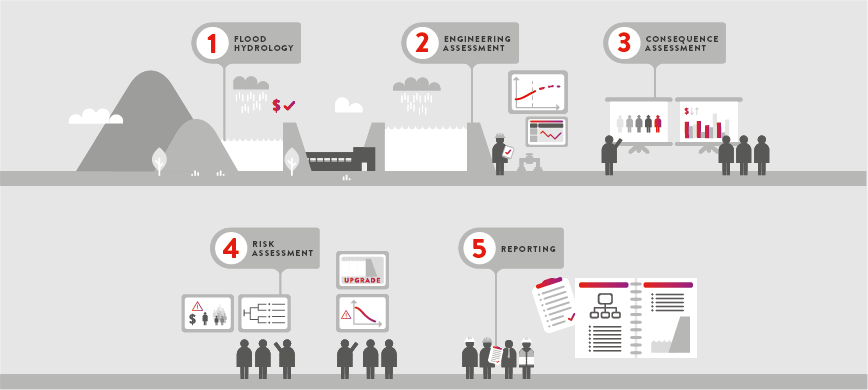
This methodology was applied across Hydro Tasmania’s dams portfolio, and an average of eight dams were added to the review each year.
By 2005, the initial ‘baseline’ assessment of the full portfolio was complete. The focus of the dam safety program has now moved to investigation and implementation of upgrades, and the communication of outcomes to senior management.
The PRA process has increased the focus on potential failure modes and risk as drivers of the dam safety program and as the basis for deciding priorities for allocating operational and capital resources.
DETERMINING PRIORITIES THROUGH A RISK FRAMEWORK
Entura’s PRA process reviews the consequences of failure of a dam by looking at the impact that it may have on downstream populations and infrastructure. The engineering assessment considers the effects on dams of extreme events such as floods and earthquakes, taking into account the specific site conditions. Combining the chance of failure and the resulting consequence determines the level of risk.
Hydro Tasmania assesses, prioritises and mitigates risks across the business using an integrated business risk management program, and the dam PRA feeds into this overall risk management approach. A dam’s assessed risk rating across common tolerance criteria drives the risk management response. The assessed dam risks are plotted together on a chart to provide a risk profile for the whole portfolio. This allows dam safety risks to be compared, understood and communicated readily throughout the business in a similar way to all other business risks.
The initial objective of the dam safety program is to reduce all the risks categorised as ‘high’ or ‘extreme’ as soon as practical , and then to continue with a program of investigations and capital works to diminish risks even further. Actions for dams lying in the higher risk zones did not wait for completion of the PRA, but were initiated as soon as risks were identified.
Some cost-effective and expedient risk-mitigation was achieved by identifying and implementing ‘quick wins’. These early actions reduced the overall portfolio risk while more complex mitigation plans were being developed. In some cases the ‘quick win’ actions have even provided the ultimate solution. In other cases, more major works have been required.
PROGRESSING THE DAM SAFETY JOURNEY
The PRA process has substantially benefited Hydro Tasmania’s dam safety program, by improving understanding of the dam portfolio, underpinning a strong strategic plan for addressing risks, improving surveillance and monitoring, and considerably strengthening dam safety emergency planning and warning.
However, this isn’t the end of the dam safety journey. Knowledge of any dam is never complete, and it is critical for dam owners to remain aware that not every failure mode may necessarily have been identified in a baseline study that relies on existing information. There may still be a level of uncertainty about the ‘unknowns’.
For Hydro Tasmania’s PRA, identifying these uncertainties enabled development of a prioritised list of investigations necessary across the portfolio. These detailed investigations have been critical to the development of the dam safety program, by confirming any potential failure modes identified in the PRA.
The list of potential failure modes of a dam portfolio must be rigorously and regularly reviewed, and investigations to reduce uncertainty about the portfolio should be ongoing. New methods and techniques for analysis are being developed all the time, and it is important to understand how these may change existing risk assessments. As well, the safety and risk-level of a dam can change as dams age, or when there are changes to the way the dam is managed.
It is also important to realise that the capital works program for dam safety risk reduction across a portfolio must remain flexible and be actively managed to respond to new or changed risks, new developments in the field of dam engineering, shifts in business priorities, delays to projects, and new developments in risk management.
The sheer number and variety of types, ages and consequence categories of Hydro Tasmania’s dams made Hydro Tasmania’s PRA a challenging process, but the benefits are substantial. The baseline study completed in 2005 is not the end of this journey, which continues to prioritise actions, reduce risks and enhance safety across the portfolio.
If you would like to discuss how we can assist you with assessing your dam risks, developing a resource-effective and comprehensive dam safety program, or applying the same PRA process to other key assets, please contact Paul Southcott, Richard Herweynen or Phillip Ellerton.
About the author
Paul Southcott is a specialist civil engineer at Entura. He has more than 32 years of professional expertise in civil and dam engineering, as well as expertise in geotechnical, foundation, structural, hydraulic and hydropower engineering. Paul’s dam engineering experience spans geotechnical and hydrological investigation; feasibility and options studies; concept, preliminary and detailed design; engineering assessment, consequence assessment and risk assessment; safety reviews; monitoring and surveillance; and emergency planning. He has extensive experience in dam risk assessment including as project manager for Hydro Tasmania’s, Taswater’s and SAWater’s portfolio risk assessment projects. He was a member of the ANCOLD committee that issued the Guideline on Consequence Categories for Dams in 2012 and is currently a member of the ANCOLD committee drafting the new Guideline on Geotechnical Investigations for Dams.
MORE THOUGHT LEADERSHIP ARTICLES
Are you an asset manager or an ‘asset guesser’?
In the hydropower sector, we’re all trying to do more with less. And as hydropower assets age, there’s always more to be done.
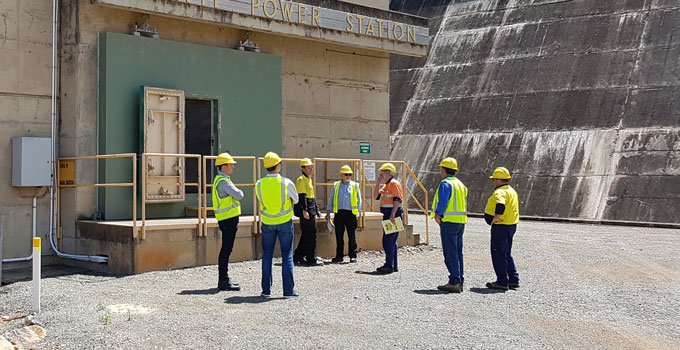
Gut feelings and guesswork won’t be enough if you want to make the best use of your asset management budget and keep your assets safe, reliable and profitable.
Today, ‘asset management’ is a much more sophisticated practice than twenty to thirty years ago. Back then, we’d refurbish or replace components at fixed time intervals (whether the work was needed or not), hoping that this would prevent or reduce breakdowns and forced outages. In most cases, this sort of scheduled maintenance was based on original equipment manufacturers (OEM) recommendations, best guesses or a mixture of both with very little evidence of root causes of actual or potential failures identified.
This maintenance attitude led to repeated failures. It also resulted in short-term planning. And, because of a lack of good evidence that current maintenance approaches were achieving direct positive business returns either in plant or financial performance, it increased the pressure to reduce maintenance budgets.
Asset management today
Hydropower assets are increasing globally, both in number and in size. So too, our knowledge of hydro assets continues to strengthen. We have much better understanding and insights now into how and why these assets wear out, how they behave, why they fail, and the ways in which they respond to various operating conditions and environments.
Operating conditions are constantly changing due to variables in the energy market, power purchase agreements, increasing expectations of customers, changing technologies and regulatory requirements, and more. So asset management needs to be flexible and to respond to the evolving context.
Today, ‘asset management’ is a trendy term – but there’s a very broad spectrum of practice across the hydropower industry, and it is a long path from basic approaches through to achievement of superior methods and strategies.
To achieve the lowest lifecycle costs for assets, as well as to minimise forced outages and breakdowns, power and water businesses need to see asset management as a crucial component of risk management and business strategy. It also needs to be viewed as an incremental journey of improvement, supported by processes and structures based on standards.
Ideally, your asset management policy, strategy, plans and activities should be based on the ISO/AS 55000 series of standards. The ISO 55000 standard series encourages aligning asset management with your broader organisational objectives, context and plans – and recommends that you regularly revisit this to be sure that alignment is maintained. This can now filter through your asset management policy and strategic asset management plan (SAMP), and be embedded in the reality of implementing your asset management plans.
In other words, your asset management policy provides direction which is aligned to your organisational context; your SAMP translates this; and your asset management plans act as the catalyst to create and sustain change in leadership, culture and asset management practice.
People, plant and process
Alignment with the principles of the ISO/AS 55000 standard series are fundamental to achieving the lowest lifecycle costs for hydropower assets. For success in your business you need to consider not only the physical asset but the entire delivery process, you need to understand what is required in each of three ‘P’s – people, plant and process – and you need an implementation plan to get you there.
Without people, we don’t have plant. Having the right people involved, right from conception, can make the difference between successful projects with years of profitability and projects that face years of increased expenditure and issues to manage. Ensuring that the right people have the right skills, training and competencies to carry out the right maintenance at the right time is paramount to achieving the plant performance you desire.
When it comes to plant, we recognise that, ultimately, all assets have a finite life – but our increasing knowledge of asset behaviour can help us to design components better for longer life and for greater cost-effectiveness and efficiency. By developing and implementing the right asset management techniques, you will increase the likelihood of your assets being profitable, reliable, available and safely operated – and staying that way. A strategic investment in asset management will more than pay for itself through increased benefits and decreased risks.
Turning to the ‘process’ element, we should recognise the importance of assessing, organising, planning, budgeting and reporting on the work effort – but there’s a need to ‘keep the processes real’. In other words, don’t implement processes for the sake of it, nor to try to address or mask problems in other areas that would be better to rectify than to over-manage. Processes should support the integration of the broader organisational context into operations and maintenance and then help to assess and report on effectiveness and performance.
By bringing people, plant and process together, and aligning asset management with your business vision and decision-making, you are far more likely to be able to get the best out of your valuable assets. And you’ll achieve a culture of continuous improvement and proactive, prioritised action – leaving no more room for reactivity and guesswork.
If you would like to discuss how Entura can assist you with assessing and managing your hydropower plants or other power or water assets to minimise risk and maximise efficiency and useful life, please contact Leigh Smith on +61 419 884 318.
About the author
Leigh Smith is a specialist consultant with extensive experience and proven ability in asset management, condition assessment, risk management and project management in the power sector, particularly hydropower. He has over three decades of practical experience with hydropower assets and has successfully delivered and project managed many major projects in Australia and internationally. Leigh has produced numerous asset management plans to support financial modelling and feasibility of major hydropower projects, as well as detailed 30-year asset management and maintenance plans that have been critical to the progression of projects around the world.
MORE THOUGHT LEADERSHIP ARTICLES
Rethinking the role of hydropower in Australia
Although hydropower is older than wind and solar generation and battery storage, its role in Australia and around the world has never been more important.
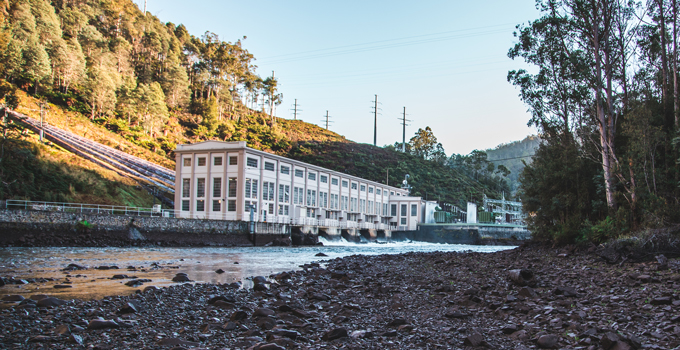
Hydropower is still by far the largest contributor to the world’s total generation of renewable energy. The fact that this old technology is still very much alive today shows that hydropower can stand the test of time and help us meet the challenges of the future.
As the proportions of solar and wind generation rapidly rise, and as we see a gradual retirement of existing thermal generation and reduced construction of new thermal generation, the role for hydropower – both in Australia and internationally – continues to broaden and build.
New opportunities for hydropower
There’s no need to see rapidly emerging and increasing new technologies as a threat to hydropower. This isn’t a winner-takes-all environment. Rather, new opportunities are emerging for hydropower as an enabler of integrated renewable developments by providing the storage needed to smooth the intermittency of weather-dependent renewables – creating ‘dispatchable’ renewable energy.
In the last couple of years, particularly since blackouts in South Australia in 2016 and nationwide rises in electricity costs, debate about energy affordability, sustainability and reliability has become both mainstream and continuous. The pressure has never been greater to find the cheapest, cleanest power that is available whenever and wherever it is needed.
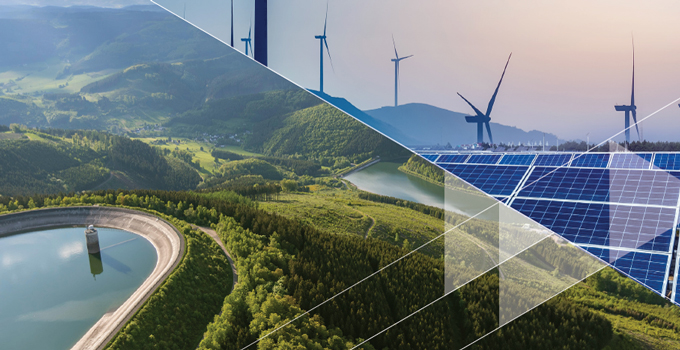
It is well known that traditional hydro schemes can provide baseload power or peaking power, grid stability services, and availability to fill in the gaps when intermittent renewables aren’t generating. However, the recent resurgence in interest in pumped hydro offers something extra: the ability to use excess available generation from wind and solar to pump water uphill into storage so that it can be used for electricity generation later – and this is why it can be described as a ‘battery’.
But how does pumped hydro compare with ‘actual’ batteries? Will rapid improvements in battery technology displace pumped hydro as a preferred storage solution? Technology is advancing very quickly in batteries, but I’m convinced that there are still some major differentiators that create space for pumped hydro.
One advantage is that we have a greater understanding of pumped hydro’s lifecycle costs and sustainability, whereas there are still a number of uncertainties in this respect for newer technologies such as batteries.
Also, critically, while batteries may be a good solution for low-power, short-term storage, they are not yet capable of providing the frequency and voltage regulation required by a grid with a high proportion of intermittent renewables. Batteries also typically cannot supply the significant level of output over a longer duration that pumped hydro energy storage or traditional hydropower can make possible.
Pumped hydro and modified traditional hydropower solutions will be needed for smoothing daily variability as wind and solar plants expand in number and size. And it is really only traditional hydropower with large reservoirs that will be able to provide the multi-day storage needed in extreme events of both low wind and low solar.
Achieving full dispatchability of combined wind and solar PV power will depend on utilising pumped hydro storage and existing hydropower storages to their full potential.
If the future of both traditional hydropower and pumped hydro is strong, why have no new pumped hydro projects been built in Australia in thirty years? What is needed to not only get it going in Australia, but also to make sure we get it right?
I believe that three crucial elements to realising hydropower’s future and ‘getting pumped hydro right’ will be identifying the most viable sites, developing a sound business case, and ensuring that we invest in the skills and capacity we’re going to urgently need in the future.
Identifying the most viable sites
A critical element for pumped hydro success is identifying a viable project – where the right site and the best design can come together into an optimal mix of capacity and cost. Entura has done a lot of work in this area, and we have developed a methodology to filter the many hundreds of potential pumped hydro sites across Australia down to the most ideal.
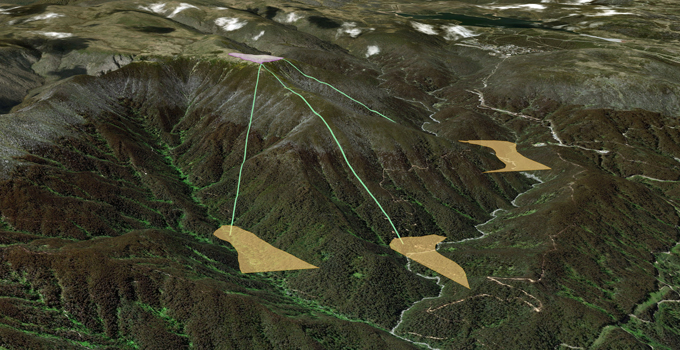
This methodology has enabled us to develop a real-world, relevant and practical pumped hydro atlas of Australia identifying project opportunities from many thousands of theoretical possibilities.
Our atlas has already been used to shortlist potential pumped hydro sites for the Battery of the Nation initiative in Tasmania, and it identifies many more promising sites and opportunities for developers in states such as South Australia, New South Wales and Queensland. And the nation has room for many more batteries.
Building a robust business case
We’ve often said that a project won’t get over the line on the base of technical viability and environmental benefits – in the current market, the dollar wins. So pumped hydro needs some level of predictability in its revenue streams. As the dynamics of arbitrage change, we need to explore a range of other revenue opportunities. And that’s a complex forecasting challenge.
Part of the solution may be price insurance and a value placed on providing network support services and firming. Another part is behind-the-meter generation and integration – such as in the Kidston project, in which pumped hydro is coupled with a large-scale solar farm, and potentially wind generation, to form a renewable energy hub.
Investing in capacity development
To me, a third critical component is investing in talent, skills and capacity. This is a global issue as much as an Australian one. To prepare our industry to adapt to change as well as to drive further change in the sector we will need to harness talent and upskill and transition workforces.
This is the kind of strategic whole-of-business workforce planning that we encourage our clients to adopt, and it will be crucial over coming years and decades.
I am excited about the future of both traditional hydropower and pumped hydro. I firmly believe that if we value hydropower as a key player in the future mix of technologies in our energy markets, we can solve the energy trilemma at home and around the world.
About the author
Tammy Chu is Entura’s Managing Director. She leads Entura’s business strategy, performance and services to clients, and is part of Hydro Tasmania’s Leadership Group. Tammy joined the business in 2000 and has held a range of positions at Entura, from Technical Professional to Project Manager, Business Development Manager and Water and Environment Group Manager.
As a civil engineer, Tammy specialised in the design and construction of mini-hydro and hydropower systems, project management, hydropower investigations, prefeasibility and feasibility studies, environmental assessments and approvals, resource investigations and resource water management.
Tammy is a member of the Board of the International Hydropower Association. She was the first female and now past president of the Tasmanian Division of Engineers Australia, and was an Engineers Australia National Congress representative.
Tammy holds a Master of Business and Administration from Chifley Business School, is a Fellow of Engineers Australia, and a graduate of the Australian Institute of Company Directors.
MORE THOUGHT LEADERSHIP ARTICLES
Can the sedimentation problem be solved?
Sedimentation is a problem for water storages, particularly in Asia. It is a major concern for all communities and industries that depend on water storages for water, food and energy security.
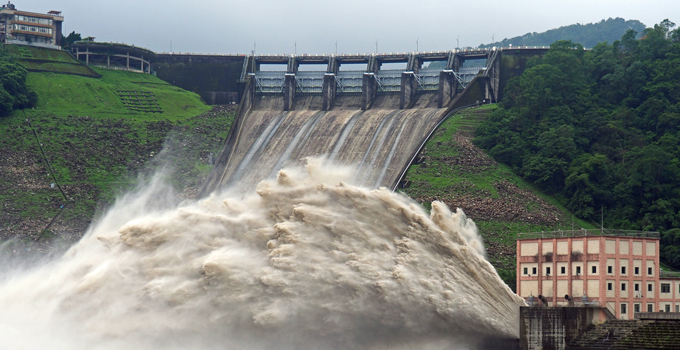
As sediment builds up over time, the storage capacity of a water reservoir will reduce. If we can effectively prevent, manage and reduce sedimentation, more water can be stored, which is critical for a sustainable future in a world experiencing increasing population, industry and climate pressures.
Loss of storage is certainly damaging to the performance of hydropower schemes, but it’s not the only sedimentation-related problem for hydropower developers and operators. High levels of sediment, whether in storages or flowing through run-of-river hydropower schemes, can seriously damage expensive hydro-mechanical equipment, causing significant operations and maintenance issues and costly outages.
It is clear, then, that planners, developers and operators need to consider how to minimise and mitigate sedimentation in all water storage projects, but particularly if the project is in a region that yields a large amount of sediment.
As with any problem, prevention is better than cure. Although, in some cases, prevention isn’t possible, or the problem already exists, so ‘curative’ options need to be explored.
Prevention
The best prevention of sedimentation problems begins at the source – in other words, the catchment area of the river. If we can reduce the sediment yield from the watershed, we can reduce the sedimentation issues in our reservoirs, increasing the life of the available storages. Most of the sediment that reaches a water resource project site is due to rainfall and run-off erosion and transportation of material by the river’s flow. When the sediment reaches a reservoir, it becomes trapped and builds up over time, reducing the amount of water that can be stored.
The quantity of sediment will be heavily influenced by the rate of erosion within the catchment, which depends on interactions among factors such as climate, soil, geology, topography, ground cover, land use and human activity. Some of these factors and interactions cannot be controlled, but human-related aspects affecting erosion and sediment yield can be predicted and managed through an integrated catchment management plan. Such a plan would require significant efforts to counter factors such as agriculture, mining, construction and deforestation, and include attention to revegetation and erosion prevention. Identifying and mitigating impacts in areas susceptible to the geological risk of landslides is another important part of the plan, whether this is around the reservoir rim or within the main catchment of the reservoir, as these areas of instability will affect sediment inflows.
Beyond this catchment-level reduction of sediment yield, planners and designers need to consider how to reduce the inflow of sediment into the particular reservoir, therefore maintaining the storage. Local or project-specific preventative approaches require accurately estimating the sedimentation rate during planning and design – through careful attention to measuring sediment concentration and the capacity inflow ratio – and, based on this estimate, considering building structures upstream of the main reservoir to either trap sediment or encourage sediment to bypass the reservoir. Sediment can be trapped before reaching the main reservoir with a series of weirs or ‘check dams’ upstream of the reservoir, yet these will only be effective until such time as they fill with sediment.
Intervention
The next option is to keep the sediment moving, either through the reservoir or past the reservoir, so the amount that is deposited in the reservoir is minimised. In many cases, the main transport of sediment is in flood water; thus, flood waters can be channelled past the reservoir using bypass structures, or can be allowed to pass through the dam at high velocity (known as sluicing). An important disadvantage of bypassing and sluicing of flood waters is the loss of a significant amount of water that otherwise could have been captured in the storage. As a result, it is most applicable in reservoirs with a smaller capacity in comparison to the total inflow.
Due to the very high cost of creating bypass conduits, bypassing the full length of a reservoir is rare, and would only be considered in special circumstances or where other methods are not effective. If the reservoir is located on a horseshoe bend of the river, a sediment bypass structure may be cost-effective due to its reduced length. Therefore the unique characteristics of the site need to be taken into account when developing the initial concept for the project, looking for opportunities created by the topography.
Sluicing involves discharging high flows through the dam structure during periods of high inflow to the reservoir, to allow sediment to be transported through the reservoir as rapidly as possible while minimising sedimentation. Sluicing is performed by lowering the reservoir storage prior to high-discharge sediment-laden floods. This approach requires relatively large capacity outlets to be incorporated into the dam design to enable the discharge of appropriately large flows at low reservoir levels to maintain the required velocities to transport sediment. This is achieved through low-level under-sluice gates, or tall crest gates, or both.
To understand how a reservoir will behave, appropriate investigations are needed in the planning stage to accurately determine the sediment characteristics, inflow and distribution in the reservoir. This data can then be used to model the flow and deposition of sediment within the reservoir, using sophisticated hydraulic modelling software. These models can be used to fully understand the problem, and to test solutions – helping to determine the appropriate location and capacity of low-level outlets, develop operating rules that will work for the particular reservoir, set the intake invert to avoid future problems, and develop an overall concept for the dam that works – all of which will contribute to avoiding future problems.
The sediment problem becomes particularly worrisome for run-of-river hydropower plants located in rivers which typically carry a high level of sediment, such as rivers flowing from the Himalayas. To protect against damage to equipment, desilting arrangements such as desilting tanks and chambers are generally provided, normally immediately downstream of the intake structure to the water conveyance system, whether a canal or a tunnel, along with modifications to equipment, such as coatings to better resist abrasion.
Remediation
The aim of remediation is to recover the original storage volume of the reservoir. If sediment has built up in a reservoir in the absence of, or despite, preventative measures, the options are now limited to reducing sediment levels through hydraulic methods (flushing through reservoir drawdown) or mechanical methods (excavation or dredging). The advantages of hydraulic methods are that they tend to be cheaper and easier, using water currents or flows to force sediments through gates and outlets close to the reservoir bed. Nevertheless, these methods may release large amounts of valuable water through the emptying of the reservoir, which may not be desirable during either dry conditions, or where the storage volume is very large in comparison to the annual inflow.
Mechanical methods, such as dredging and excavation, are typically very expensive and only practical on certain reservoirs, and therefore seen as a last resort. Dredging can either be via hydraulic pumps (for finer sediment) or mechanical grabs (for coarser sediment) on barges. Due to its expense, it is often only used to remove sediment from specific areas near the intake structure of a dam. If a reservoir can be completely drawn down, which is not practical for many reservoirs, accumulated sediment can be removed through scrapers or excavators and dump trucks.
Finally, there may be the potential to add new storage to the existing reservoir by raising the dam. The practicalities of this will need to be evaluated through a feasibility study process, as is normally adopted for a new dam.
The right solution depends on good information
In many cases, managing sedimentation will require a combination of strategies and technologies, such as reducing the sediment yield at the catchment level, reducing inflows of sediments into storages using appropriate structures and technologies, operating storages effectively during flood conditions, and actively managing storage levels and operating rules to allow sluicing and flushing.
Many of the sedimentation problems experienced around the world were either not predicted or significantly underestimated during design. To avoid this situation, continuous, adequate and accurate monitoring data is needed, as well as appropriate modelling and projections that take current and potential future conditions into account. Solutions that have been tested via appropriate modelling are much more likely to meet performance requirements and to avoid future risks.
The rate of sediment deposition is heavily influenced by the sediment concentration and the capacity inflow ratio, so careful estimation of these two parameters is very important in identifying the seriousness of a sedimentation problem. In existing large reservoirs, sediment management will benefit from supplementing conventional hydrographic surveys with the adoption of improved survey methods and remote-sensing techniques. The resulting data will enable more reliable estimation of sedimentation rates.
Better measurement, modelling and estimation of sediment – for existing storages as well as future reservoirs – will provide the insights we need to improve sediment planning and management. The right combination of sedimentation estimation, prevention, intervention and remediation will be critical for the long-term health of our water storages and a sustainable future.
If you would like to find out more about how Entura can help you develop a sustainable water storage solution or respond to sedimentation challenges, contact Shekhar Prince on +61 412 402 110.
About the author
Richard Herweynen is Entura’s Technical Director, Water. Richard has three decades of experience in dam and hydropower engineering, and has worked throughout the Indo-Pacific region on both dam and hydropower projects, covering all aspects including investigations, feasibility studies, detailed design, construction liaison, operation and maintenance and risk assessment for both new and existing projects. Richard has been part of a number of recent expert review panels for major water projects. He participated in the ANCOLD working group for concrete gravity dams and is the Chairman of the ICOLD technical committee on engineering activities in the planning process for water resources projects. Richard has won many engineering excellence and innovation awards (including Engineers Australia’s Professional Engineer of the Year 2012 – Tasmanian Division), and has published more than 30 technical papers on dam engineering.
MORE THOUGHT LEADERSHIP ARTICLES
Identifying Australia’s best sites for pumped hydro development
There are many thousands of potential sites for pumped hydro energy storage developments across Australia, but how can a developer filter these down to the best few?

As Australia’s energy market progressively transitions from ageing thermal generation to increasing amounts of wind and solar, there are ample chances to explore and develop the energy storage solutions needed to mitigate the challenges that may come with the introduction of more renewables into the energy market.
With increased intermittent renewables, we will require more storage to smooth out the variability of weather-dependent generation so that energy is available on demand. As well, we will need storage that provides the inertia, voltage and frequency control required for a stable, reliable grid.
The key to successfully embracing these energy storage opportunities will lie in identifying the right mix of technology, capacity and site; however, pinpointing potentially viable projects is complex. A theoretical or academic approach won’t be enough to ensure a future project’s success in the real world.
Pumped hydro is a highly efficient, longer-duration solution with a proven track record, and its future is bright as Australia seeks cost-effective, reliable options to make intermittent renewables ‘dispatchable’.
There are thousands of potential pumped hydro sites across Australia. This means that developers and investors need smart methods of filtering to reduce the many possibilities to just a few ideal sites.
A pumped hydro project is a major capital investment. Getting site selection right is the foundation for success, as it will determine the likelihood of achieving a design that is both technically and commercially feasible with the right mix of capacity and costs.
Pumped Hydro Atlas of Australia offers a head start in site selection
Entura has produced a practical atlas of pumped hydro energy storage opportunities to support development of dispatchable renewable energy generation across Australia’s National Electricity Market (NEM).
Through an exhaustive process, the atlas filtered many thousands of potential sites down to the best 20 around Australia. It is already being used by leading renewable energy company Hydro Tasmania to shortlist potential pumped hydro sites for the ‘Battery of the Nation’ initiative (a major Tasmanian initiative looking at how Tasmania could deliver more clean, reliable and cost competitive energy to Australia’s NEM). Identification of promising pumped hydro sites through the atlas also offers opportunities for developers in states such as South Australia and Queensland, which have set ambitious renewables targets and must maintain energy security.
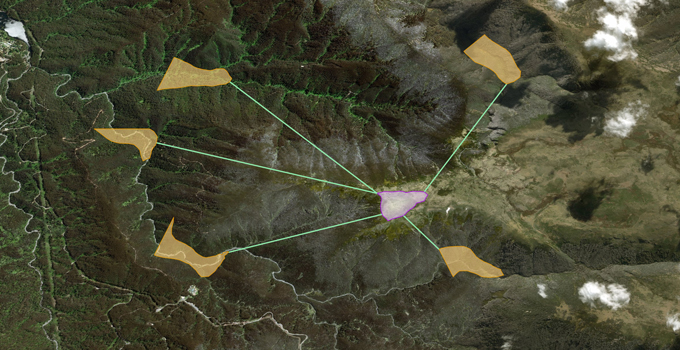
Entura’s Pumped Hydro Atlas of Australia takes into account far more than the basics of identifying ideal topography and a source of water. It also accounts for other practical factors that can make or break a project: such as proximity to and location within the transmission network, land-use constraints and environmental risks, and the practicalities and costs of construction and ongoing operation. This makes it a real-world, relevant resource identifying the best sites for pumped storage projects across the NEM.
Developing the Pumped Hydro Atlas of Australia
Originally commissioned by Hydro Tasmania, the Pumped Hydro Atlas of Australia was completed in October 2017. The journey began with a literature review, appraising previous studies. This informed the development of a set of rules, assumptions and algorithms for a GIS-based study of different reservoir types and pairing mechanisms, which were tested on pilot sites.
Using these algorithms, more than 200 000 pairing reservoirs were identified across the NEM states (Queensland, New South Wales, Victoria, Tasmania, South Australia and the Australian Capital Territory). State-based heat maps of potential sites for pumped hydro development were prepared, along with a summary of all key characteristics for each pairing reservoir set, such as installed capacity, energy storage, distance from the nearest substation, gross head, approximate headloss in the waterways, and active reservoir volume.
A subsequent stage of refinement prioritised high-potential sites in some states. This process took into account greater practical detail, such as costings, practical engineering aspects, environmental approvals and risks, realistic high-level arrangements, proximity to other generators, and characteristics of hydrology and energy storage. This stage identified more than 5000 unique potential sites, which were then further refined with a set of rules to select the best pairing reservoir at each site. The approximately 5000 sites were reduced to approximately 500 of the most attractive options: those with an average head of more than 300 m with relatively short distances between the reservoirs.
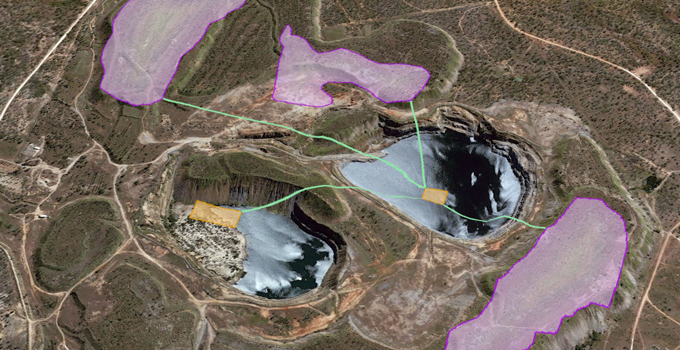
This exhaustive refining process ultimately resulted in a shortlist of twenty promising sites across different states, with a desktop review of geology, high-level engineering arrangements, and approvals requirements. For each site a map was prepared including locality, land use, planning zones, and key characteristics of the potential pumped hydro project.
The Pumped Hydro Atlas of Australia is an example of how applied hydropower engineering can be used to create practical outputs, which are ready to be applied in the real world. Overlaying the outputs of this atlas with any new wind and solar development across the NEM could result in opportunities to invest in dispatchable renewable energy generation hubs capable of replacing thermal generation assets as they retire.
Pumped hydro energy storage will no doubt play a major role in the development and expansion of networks powered by renewable energy – in Australia and around the world. As Australia’s electricity mix evolves, so will the economics of storage. While forecasting revenue for storage projects in the Australian electricity market is still somewhat uncertain, there are many opportunities in both the existing and emerging markets to guarantee project revenues to a level sufficient to satisfy a lender’s requirements. The opportunity for investors seeking a head start in this emerging market is now.
If you would like to discuss how Entura can help you with your pumped hydro or renewable energy project, please contact Richard Herweynen on +61 429 705 127 or Phillip Ellerton on +61 439 010 172.
MORE THOUGHT LEADERSHIP ARTICLES
Dispatchable renewables: a contradiction in terms?
As Australia replaces retiring coal generation with renewables, can we achieve an energy future that is affordable and sustainable as well as reliable?
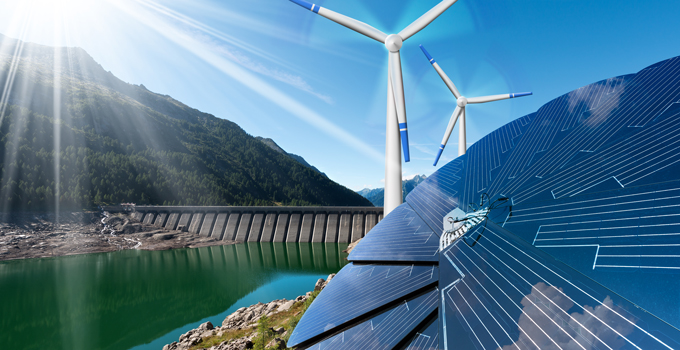
The role of renewable energy in achieving affordability and sustainability is clear. As coal-fired power stations approach retirement in Australia, renewable generation from wind and solar PV appear to be the most cost-effective options for new energy generation. Wind and solar power now offer the lowest cost of energy, have low ongoing operational costs, and emit the least greenhouse gases across their lifecycle – and therefore hold the greatest potential for rapid decarbonisation of the energy sector.
But what about achieving the third element in what has been termed the ‘energy trilemma’: reliability?
Replacing coal-fired power stations with wind and solar PV is not a like-for-like swap in terms of availability of power when it is needed by consumers. Coal-fired power stations produce firm baseload power, but generation from renewable resources varies due to the availability of the natural resource. Wind and solar PV power vary according to the weather and the time of day, and even if we consider new hydropower opportunities, most of these are small ‘run-of-river’ systems, the output of which varies with rainfall and the inflows to rivers.
Yes, these renewables certainly produce energy, but is the power produced when it is needed?
The variability in power from renewables makes matching supply and demand a challenge. This challenge increases as more renewables enter the market. With moderate amounts of renewables, it is still possible to maintain system reliability through clever solutions – in particular, targeted grid support designed through careful planning and study of generation profiles, and supported by solid communications, control, power systems studies and forecasting. However, there is a limit to such approaches, and ultimately Australia will need ‘dispatchable renewables’ in the energy mix to achieve all the elements of the energy trilemma – in other words, renewable generation that is available whenever consumers require it. The time to start planning for this transition is now.
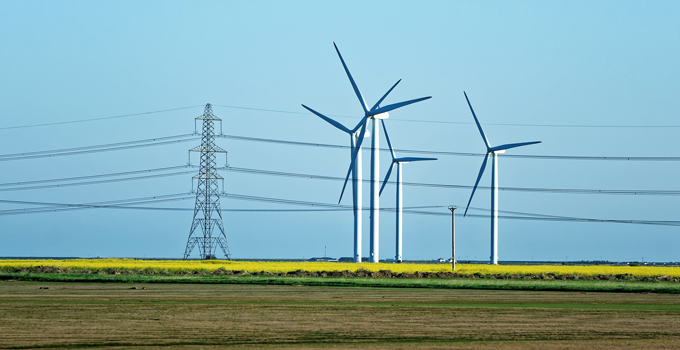
For generation to be dispatchable it needs to be available at the request of power grid operators or the plant owner according to the needs of the market. Dispatchable generators can be turned on or off, or can adjust their power output according to market need. If a generator is dispatchable it can be used to match load, meet peak demands, or fill the gap if another generator suddenly goes offline. Dispatchable generation is very valuable to the market because it can be used to match the profile of energy demand.
Effectively, baseload fossil fuel generation can be replaced by the combination of variable renewables, dispatchable renewables, smart high-voltage network support and planning to ensure sufficient transmission capacity, and change in use of existing hydropower.
How can we make variable renewables ‘dispatchable’?
The concept of dispatchable renewables seems almost contradictory: how can something generated from an inherently variable resource be dispatchable? There are two parts to this: the first is to look at how well different wind and solar PV sites naturally work together to firm supply (i.e. how likely it is that dips in one source are filled by peaks in another). Once this is understood, we need to consider how much storage is required to manage residual variability. Storage is critical here as it provides flexibility to store excess or low-value energy for times when it is really in demand.
When patterns of renewable generation are highly correlated (in other words, the timing of generation is very similar), more storage is required. For example, if the east coast of Australia develops a very high proportion of solar PV generation capacity, then all of these will be generating within about two hours of each other during the day (because of similar sunrise and sunset times across this region), and not at night. To fully utilise this energy, much of it would need to be made ‘dispatchable’ by adding substantial storage for the night-time hours, or we would need to firm the supply using another generation source, such as a gas turbine. But with a suitable proportion of wind in the mix (and stronger interconnectors to solar generation from other regions), the same dispatchability can be achieved with a more moderate amount of storage. This example demonstrates the importance of achieving a mix of renewable generators to meet the goal of dispatchability.
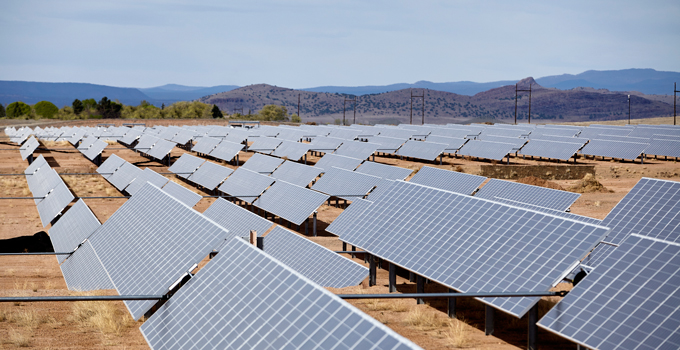
Various studies of generation in the NEM over time have demonstrated that wind and solar generation are not highly correlated. These studies have shown that even with low to moderate correlation, when considered over a large geographical area, a combination of such generators reduces variability and increases reliability of supply. Understanding this effect enables appropriate sizing of storage to create a dispatchable renewable portfolio with maximum value. There will always be some times when multiple generators produce near maximums, as well as some times when both wind and solar produce near minimums; these occasions are not common, but could have significant consequences. This is a risk that needs to be managed by the system.
The amount of firm capacity can be increased by over-installing generation, and curtailing its output when there is too much generation. However, there are still those infrequent periods when multiple generators are at their minimum and parts of the grid need extra support. Having this support available during these rare occasions will be critical to managing risk and maintaining reliable supply.
This indicates that the mixture of different renewables won’t take us all the way to the goal of achieving ‘dispatchable renewables’; storage remains a critical ingredient.
What’s the future for energy storage?
The media is awash with reports of new energy storage options. It is important to recognise, though, that different types of storage solutions vary widely in their ability to discharge power over different time frames. Therefore one type of storage will not necessarily deliver the same solution as another type of storage. Understanding this is critical to the concept of dispatchable renewables.

The power and duration of the storage are the two key variables in determining the most suitable solution. Low-power, short-term storage is currently more cost-effective using batteries, but longer periods and larger power requirements are likely to rely on bigger storage options, such as pumped hydro energy storage and traditional hydropower.
With individual wind and solar plants pushing 1 GW, pumped hydro and modified traditional hydropower solutions need to be considered. Smoothing out the daily variability in renewables can be achieved effectively through pumped hydro, but multi-day storage to supplement periods of extreme events of both low wind and low solar will require traditional hydropower with very large reservoirs.
In the long run, short-term storage will not be sufficient alone to achieve the aim of ‘dispatchable renewables’. Achieving full dispatchability of combined wind and solar PV power will depend on utilising pumped hydro storage and existing hydropower storages to their full potential.
When will we need dispatchable renewables?
The question of when we’ll need dispatchable renewables is complex. It’s driven by a combination of commercial, regulatory and technical considerations as well as changing customer behaviour (all of which are in motion).
The short answer is now.
There are already isolated opportunities in which dispatchable renewables offer distinct advantages, and where the business case may stack up. With increasing wind and solar PV developments in the network without dispatchable capability, such opportunities will only expand. However, the lead time required to include large-scale storage in these ‘dispatchable renewables’ projects means that planning must begin well in advance.
If you would like to discuss how Entura can help you explore potential opportunities for dispatchable renewables, please contact Phillip Ellerton on +61 439 010 172, Richard Herweynen on +61 3 6245 4130 or Chris Blanksby on +61 408 536 625.
About the authors
Richard Herweynen is Entura’s Technical Director, Water. Richard has three decades of experience in dam and hydropower engineering, and has worked throughout the Indo-Pacific region on both dam and hydropower projects, covering all aspects including investigations, feasibility studies, detailed design, construction liaison, operation and maintenance and risk assessment for both new and existing projects. Richard has been part of a number of recent expert review panels for major water projects. He participated in the ANCOLD working group for concrete gravity dams and is the Chairman of the ICOLD technical committee on engineering activities in the planning process for water resources projects. Richard has won many engineering excellence and innovation awards (including Engineers Australia’s Professional Engineer of the Year 2012 – Tasmanian Division), and has published more than 30 technical papers on dam engineering.
Dr Chris Blanksby is a Specialist Renewable Energy Engineer at Entura, and Entura’s lead solar energy specialist. He has undertaken and published research on the solar resource in Australia, and has led several due diligence and owner’s engineer projects for wind, solar and microgrid projects in Australia, the Pacific and Asia.
MORE THOUGHT LEADERSHIP ARTICLES
Maximising the benefits of GIS for better business decisions
‘Location, location, location!’ It’s a familiar catch-phrase in the real estate industry, but it’s just as relevant in the power and water sector. Wherever there’s location-related data, a geographic information system will guide better business decisions.
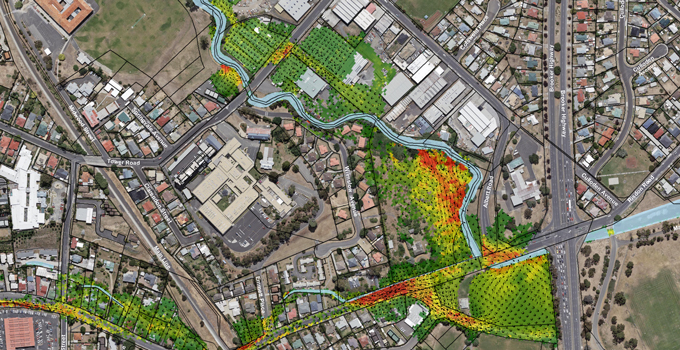
Mobile devices and apps are increasingly using location-based data collected via satellites, drones, LIDAR and other rapidly developing sensing and data capture technologies. With these advances, we are able to find relevant information more quickly and draw on that information to make informed decisions. We’re seeing this proliferate in everyday life through apps that help us navigate, find services and products, and make decisions ranging from the trivial to the profound.
Developers and managers of power and water infrastructure projects who embrace GIS (geographic information systems) stand to gain benefits on an even greater scale. Gathering high-quality spatial information and analysing it to guide business decisions will certainly improve productivity and the bottom line.
Better decisions are the necessary foundation for increased revenue, lower costs, greater efficiency and productivity, and reduced risks. So, if the technology is available and there’s so much to gain, why isn’t GIS being as widely used in the power and water sector as it could be? What may be holding businesses back from fully embracing this powerful and dynamic technology?
Do we really need to use GIS for this project?
All power and water projects involve location – from finding an optimum site for your project, to analysing combinations of spatial data to make the best management decisions or to predict events. Whenever you ask a ‘where?’ question, GIS can help. Where is the asset best located? Where are the constraints or hazards? Where are the reports of previous work done in this area? Where are the customers or opportunities?
In other words, rather than asking whether GIS is needed on a project, consider making GIS a default for every project. The real question should be “how can we maximise the benefits of using spatial data and GIS on this project?” GIS can offer business benefits far beyond the most commonly understood use: making a map.
Data capture in the field can now be streamlined – gone are the days of capturing field data with pen and paper. Users can now collect data on mobile devices, sync to databases while in the field, share data, and generate their own maps, queries and reports. Embracing these advances will save time and enable faster and better decisions.
As well as providing valuable business insights, spatial analysis and location intelligence can greatly improve communication and knowledge sharing – within project teams, with the broader business, and with the community and stakeholders – via tools such as web maps and apps, visual analysis and 3D modelling.
One of the most important applications is the simultaneous analysis of different spatial datasets to provide the best solutions or choices between alternative options, locations, objects and so on. This process is better known as multi-criteria analysis (MCA) and it can be used for many applications.
For example, MCA can be used to find the optimum site for your project taking into account a range of values such as local geology, threatened species, resource availability, land use and terrain, planning restrictions, communities and demographics. Using MCA, you can establish areas of best fit for your project based on thematic overviews of areas of constraint, cost of construction, access and transportation routes.
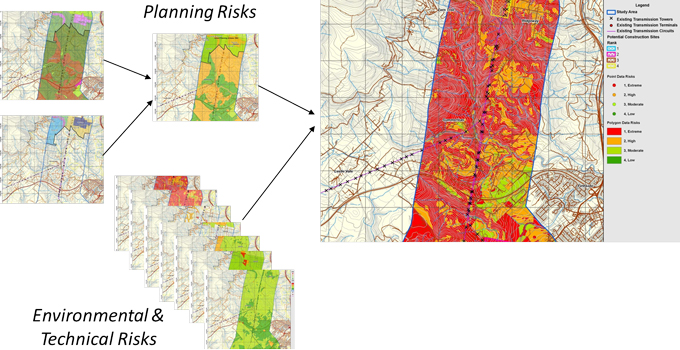
Risks such as bushfire, weeds, threatened species, pollution sources, landslides and erosion can also be more easily and fully understood, supporting your ongoing site management of such issues.
GIS also links with document management, asset management, business intelligence and enterprise resource planning (ERP) systems. It can act as a portal, creating a central point of easy access, pulling together information and making it available on one of the simplest forms to interpret – a map.
Of course GIS is not the answer to everything, and it is not a standalone platform. However, there’s much it can offer across many different business activities, working together with other business systems.
What about the costs?
The return on investment of using GIS should be positive if it is used appropriately. For site selection of power and water projects, using GIS is a no-brainer. For example, using GIS to find the best site for a wind farm – locating the best winds, minimal constraints, good proximity to existing infrastructure and appropriate land use – will obviously result in vastly greater returns than siting the wind farm in an inferior location.
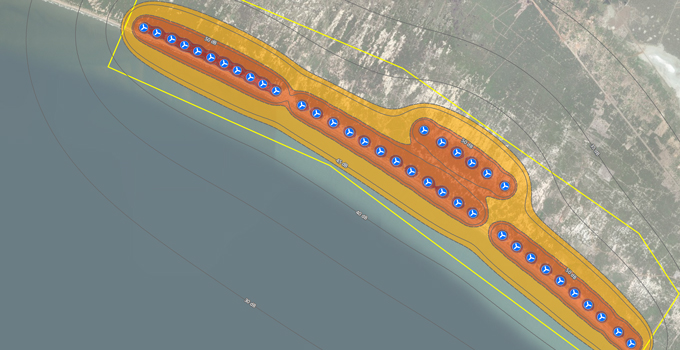
Some examples may be less immediately apparent, but equally valuable – for example, using GIS to increase efficiencies in everyday workflows. If your workers are taking an extra half hour every time they need to find previous work completed in an area, this time can add up quickly. Or perhaps they can’t find previous information, so work is re-done unnecessarily. These costs will keep adding up. Instead you could use a GIS web map to locate all your previous reports and projects, so that a simple click on a map finds the files and saves hours (if not days) of time.
Do we need specialist software or skillsets?
With most things, you do need specialised skillsets and software to get good results, and of course bad data in equals bad data out. Users of GIS do need to understand and assess the spatial data needs in each application.
You could undertake some GIS work yourself using free or open-source software. However, be aware of the risks of using data or tools that aren’t fit for purpose. Just because you know how to use Microsoft Word, doesn’t mean you could write a detailed report outside your area of expertise!
We have seen cases where coarse-resolution data has been used to infer finer project details and costs, resulting in poor decisions. We have also seen inexperienced operators make invalid assumptions. To get the best results, you need to be sure that you’re using the technology wisely.
If you are engaging a power, water or environmental consultant on a project, they are likely to have access to GIS capability; however, GIS is still often underutilised. When deciding who to engage on your project, ask your consultant how they will maximise the benefits of GIS to produce better outcomes for your project.
To discuss how Entura can help you harness the potential of GIS to improve your power and water project decisions and outcomes, contact Stephen Thomas on +61 3 6245 4511, Patrick Pease or Phillip Ellerton on +61 439 010 172.
About the authors
Stephen Thomas is Team Leader and Senior Technical Officer with Entura, specialising in geographic information systems, 3D visualisation and CAD software. Steve has over twenty-six years of technical experience and specialises in environmental assessments and approvals for engineering surveys and property. He has created 3D models and animations of proposed developments including wind farms, urban landscapes and city frameworks. Steve’s work on the Hobart Waterfront 3D model won an international award in geospatial modelling.
MORE THOUGHT LEADERSHIP ARTICLES
Is there an economic case for pumped hydro?
As the proportion of renewable energy in the grid continues to grow, pumped hydro energy storage offers a solution for greater reliability. But can the business case for storage stack up?
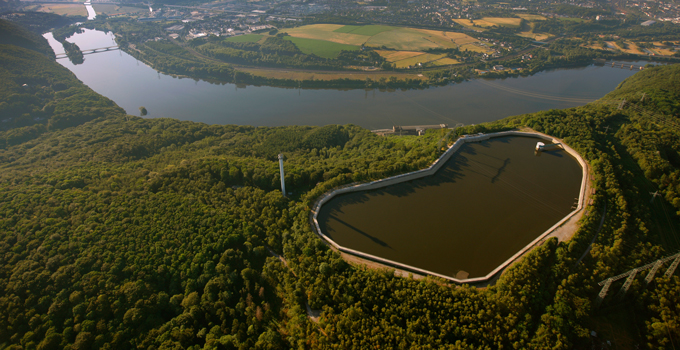
The future is bright for pumped hydro in Australia, and for storage in general. However, no energy solution can exist outside of the real and competitive pressures of the market. Technical viability and environmental benefits won’t be enough to get projects over the line if they can’t demonstrate their financial soundness.
So how can pumped hydro generate sufficient revenue to be attractive to investors? And will that revenue continue to be predictable enough over the longer term?
No doubt there are opportunities, but developers may need to explore a range of different revenue sources in both existing and emerging markets since the arbitrage opportunities of the past may not be present in the future.
Where to for energy arbitrage?
The traditional revenue source for pumped hydro is arbitrage – in other words, making the most of generating when the spot price is high, and pumping when the spot price is low. But this relies on a certain level of predictable variability in the electricity market, and for that variability to continue into the future.
The upcoming retirement of several coal-fired power stations and the continued investment in renewables are likely to cement a market in which variability in power generation and the consequent volatility in energy prices are the norm.
Forecasting revenue – no easy task
Financing an energy project requires a firm revenue forecast. Lenders may consider ‘firm’ to be a 90% confidence limit, which means the developer must demonstrate that the project can generate a certain amount of revenue 90% of the time, or, say, in 9 out of 10 years. This means that a robust and reliable forecast of project utilisation must be made.
Forecasting revenue for an asset with a lifecycle of up to 100 years requires detailed modelling of a wide range of factors influencing the electricity market, including supply (factoring in new entrants, storage, retirements and developments in the thermal sector, etc.), demand (including changes in industrial load, impacts of electric vehicles, etc.), fuel prices, government policies, and bidding strategies for large-scale wind and solar projects.
A business case for pumped hydro relies on all the assumptions that go into regular power plant financial modelling and adds the complexity of arbitrage.
A further complication is the impact on market prices of the presence of the developer’s own project. In other words, how will the proposed project influence the market in which it participates?
For a storage project, the influence is likely to be both an increase in low prices and a decrease in high prices. If the market is robust enough and the proposed project is relatively small, the influence could be minor. However, a very large project is likely to influence the market to such an extent that the utilisation of the project may significantly reduce, which would reduce project returns.
Building a bankable business case
How can the confidence in a forecast be increased enough for a lender to commit funding to a project, given that variance of any one of these assumptions could disrupt the revenue streams for the project? While the transition to a renewables-dominated market continues, it may be that lenders need assurance that other revenue streams exist to reduce the project risk.
Price insurance
High price events in the electricity market will certainly continue to occur, but it’s impossible to predict their timing. Energy storage projects can provide insurance to exposed customers (such as retailers and major industrial customers) through a cap contract in a similar way to gas turbines and other peaking plant. In practice, this may mean that the storage project rarely operates unless the price regularly exceeds the cap.
Network support services
Storage projects have the ability to provide network support services such as frequency control, inertia and fault level control. These services have increasing value in a grid with significant amounts of non-synchronous generation. At this stage, the markets for these network support services are very shallow and competition is increasing. However, the need for such services is likely to increase to the point where more significant markets are required.
Renewable firming
Government energy policy continues to be fluid, yet under the proposed National Energy Guarantee it is possible that there will be value in providing firming services – in other words, pairing ‘dispatchable’ generators (such as storage projects or open-cycle gas turbines) with ‘intermittent’ renewable sources of energy to improve reliability.
‘Behind the meter’ generation
Storage projects are exposed to market prices during both modes of operation (pumping/charging and generating). If, however, there was an option to pump/charge for ‘free’, wouldn’t that reduce the risk?
Genex Power’s world-first Kidston ‘K2 Project’ will pair a 250 MW pumped hydro project with a 270 MW solar PV farm. During the day, solar energy can be used to power the pumps in the pumped storage project. The pumped hydro project will then generate into the evening (and morning) peak. If the upper storage is ‘charged’ during the day, the K2 solar project can generate into the Queensland market and realise the benefits of large-scale generation certificates (LGCs). Of course, this arrangement relies on sufficiently high prices during peaks to recover the additional cost of the solar farm, transmission losses and any LGC liability.
As our electricity mix evolves, so will the economics of storage. While forecasting revenue for storage projects in the Australian electricity market is still an uncertain business, there are many opportunities in both the existing and emerging markets to guarantee project revenues to a level sufficient to satisfy a lender’s requirements.
If you would like to discuss how Entura* can help you with your pumped hydro project, please contact Nick West on +61 408 952 315 or Donald Vaughan on +61 3 6245 4279.
*Entura provides technical advisory services to prospective investors and developers. Financial advisory is not part of our suite of services, however, we partner with financial advisory firms supporting our clients. Entura is the consulting arm of Hydro Tasmania. Hydro Tasmania is licensed (AFSL 279796) to provide general financial product advice. Hydro Tasmania is not licensed to provide nor will it provide advice which considers a person’s objectives, financial situation and needs and you must therefore rely on your own assessment or seek your own independent advice in respect of decisions in relation to any financial product offered.
About the authors
Nick West is a civil engineer at Entura with more than 16 years of experience, primarily in hydraulics and hydropower. Nick’s skills range from the technical analysis of the layout of hydropower projects to the preparation of contractual project documents and computational hydraulic modelling. Nick was a key team member of the Kidston Pumped Storage Project Technical Feasibility Study.
Donald Vaughan is Entura’s Technical Director, Power. He has more than 25 years of experience providing advice on regulatory and technical requirements for generators, substations and transmission systems. Donald specialises in the performance of power systems. His experience with generating units, governors and excitation systems provides a helpful perspective on how the physical electrical network behaves and how it can support the transition to a high renewables environment.
MORE THOUGHT LEADERSHIP ARTICLES
‘Nexus thinking’ for a secure and sustainable future
As the global population continues to grow, how can utilities and water managers balance the increasing and interrelated pressures on water, energy and food?
The complex triangular relationship among these three pillars of life is known as the ‘water-energy-food nexus’. It’s an intricate puzzle, in which the increased demand for each limited resource can significantly affect the security of all three.
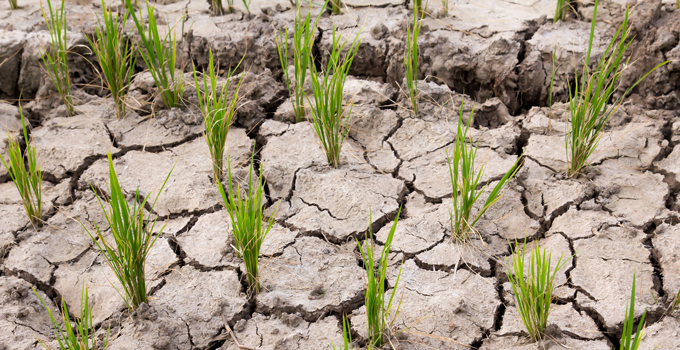
According to the International Renewable Energy Agency, over the next few decades, global growth in population, economic development and urbanisation are expected to raise demands for water and food by 50% and to double the demand for energy. Water, energy and food are all fundamental to growing economies, alleviating poverty, and improving health and educational opportunities worldwide. To create a sustainable future, we must seek holistic and integrated solutions for water, energy and food challenges , as well as the appropriate balances amongst them.
With water being so central to food security and energy security, the potential impacts of climate change on water resources are of increasing concern. Climate change is likely to raise average temperatures in many locations, change the patterns of rainfall and inflows, and affect the frequency and severity of extreme weather events such as drought or floods – all of which increase vulnerabilities for water, food and energy resources already under strain.
A nexus approach
Our experiences throughout Australia and the Asia-Pacific region demonstrate that there is no single solution to the challenges of this nexus. It is really about a way of thinking and approaching decisions rather than a fixed solution or response.
These five broad considerations are likely to contribute to improved nexus outcomes.
Promoting and adopting ‘nexus thinking’
‘Nexus thinking’ means considering and understanding water, food and energy and their interrelationships, rather than viewing any in isolation. It is a strategic and holistic style of thinking that considers long-term implications across the nexus, weighing up and balancing social, economic and environmental goals.
Nexus thinking looks at the big picture: considering the whole catchment or river basin, trans-boundary issues, multiple uses (existing and future) and cumulative effects. It also involves thinking across agencies and organisations where responsibilities for water, food and energy lie.
Gathering the best information to understand nexus challenges
Responses to nexus challenges are more likely to be effective and sustainable if they are based on an informed and risk-based understanding of present conditions and possible future scenarios (taking into account interrelationships across sectors and regions).
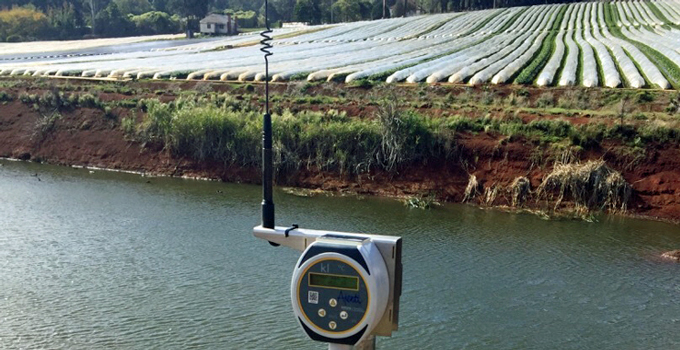
This means that decision-makers need to understand the resource availability, current demand, known impacts, development opportunities and potential climate change implications in a given situation. They also need to understand what stakeholders and communities need, and explore opportunities for additional benefits to be realised.
Fostering collaboration among government, regulators, industry and communities
All stakeholders can benefit from collaborative and cooperative responses to the nexus and to stewardship of resources. The potential wins include better economic outcomes, improved reputation, reduced risks, avoided conflict, and opportunities for greater synergies. Reaping the benefits will require partnerships and cooperation among food-producing industries, the energy sector and other water-dependent industries, as well as local communities.
It’s also essential that governments, regulators and communities are closely involved in all decisions and developments affecting water, energy and food resources so that different priorities and opportunities can be considered. At a policy and regulatory level, cohesive and stable governance, policy and strategies are needed to facilitate and encourage the right collaboration that brings benefits to all stakeholders.
Assessing risks and building climate resilience
The water-energy-food nexus brings risks as well as opportunities . Interrelationships between water, energy and food, and the threats posed by climate change, should be built into risk assessments in each sector. State-of-the-art data collection, modelling and forecasting can assist businesses, governments and communities to better understand and mitigate their specific climate-related vulnerabilities and take action towards building greater resilience to future climate change impacts.
Innovating
In the water, energy and food sectors, technological and other innovations continue to expand the opportunities for improving productivity and resource efficiency for long-term sustainability of pressured resources.
Nexus challenges may also bring opportunities
The nexus is not only a dynamic of ongoing resource competition. Integrated planning offers opportunities for potential synergies and benefits among sectors.
For example, in the hydropower sector, electricity generation is intrinsically linked with water availability. The need for water for irrigation to produce food and to drive agricultural productivity may compete with water requirements for hydropower generation. Hydropower’s water needs may also compete with the requirements of urban water supply, other industries and environmental and social needs.
However, renewable energy resources such as hydropower can also offer benefits to the water and food sectors through improving water resource management, providing multipurpose storages, contributing to the development of water supply infrastructure and, of course, generating the electricity critical to food-producing industries.
Many existing hydropower storages, both in Australia and internationally, were developed solely to supply water for energy generation. However, over time and with increasing competition for water and food, the storages have become multipurpose, often providing water for domestic supply, irrigation, and commercial and recreational fisheries.
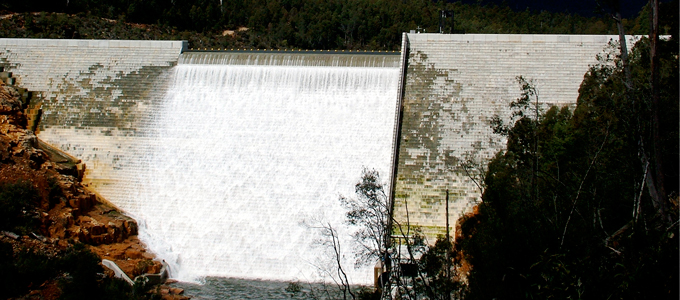
In South-East Asia, some hydropower storages are now more important as a source of irrigation water for downstream communities than for the energy they generate. By providing water to the downstream communities, irrigation and food production has increased significantly since development of the schemes, lifting the economic development of the region and providing benefits across the community.
Integrating other renewable energies into water supply, irrigation and food production can also provide mutual benefits, such as utilising renewable energy for pumping on farms or for water desalination. Incorporating small hydropower into existing water infrastructure can improve efficiencies and create new low-carbon income streams to support effective water supply delivery. Another innovation of attaching solar PV to covers on water storages provides electricity for pumping while minimising evaporation and maximising water availability.
Whether at small-scale single utility or local geographic area or at a national or multinational scale, nexus thinking can bring about mutual benefits for energy, water and food outcomes .
If you would like to find out more about how Entura can help you develop a sustainable water or energy solution or respond to the challenges of the water-energy-food nexus, contact Dr Eleni Taylor-Wood on +61 3 6245 4582 or David Fuller on +61 438 559 763
About the authors
Dr Eleni Taylor-Wood is Entura’s Principal Consultant, Environmental and Social Science. Eleni has more than 20 years’ experience successfully managing large-scale, complex projects that run over several years, as well as providing expert advice and independent review for a range of infrastructure and planning projects. She has worked on projects around the world including in Australia, Mozambique, South Africa, Iceland, Colombia, India, Malaysia, Mekong, Solomon Islands, Fiji and Papua New Guinea. Her experience covers a vast gamut of studies including: environmental and social impact assessment and management; strategic management of wetlands and waterway; feasibility and approvals for new hydropower projects, environmental flow determination and assessment, and sustainability assessments. Eleni is currently one of eleven Accredited Assessors under the Hydropower Sustainability Assessment Protocol worldwide.
David Fuller is Entura’s Principal Consultant, Water Management and Technology. David has more than 30 years’ experience working on water management projects across Australia and overseas. He has successfully delivered projects for local, regional, state and national government agencies; and for private sector clients in the irrigation, coal seam gas, mining and energy generation sectors. David specialises in engineering and environmental hydrology, and water management. He also has expertise in data management systems, statistics, hydraulics, water quality, ecological risk assessment and natural resource economics.

